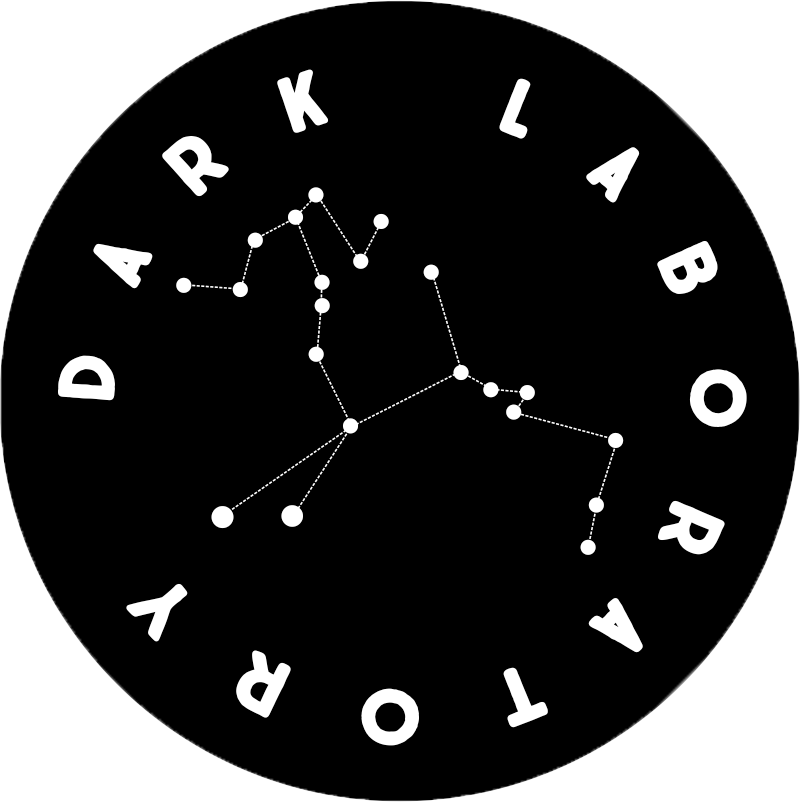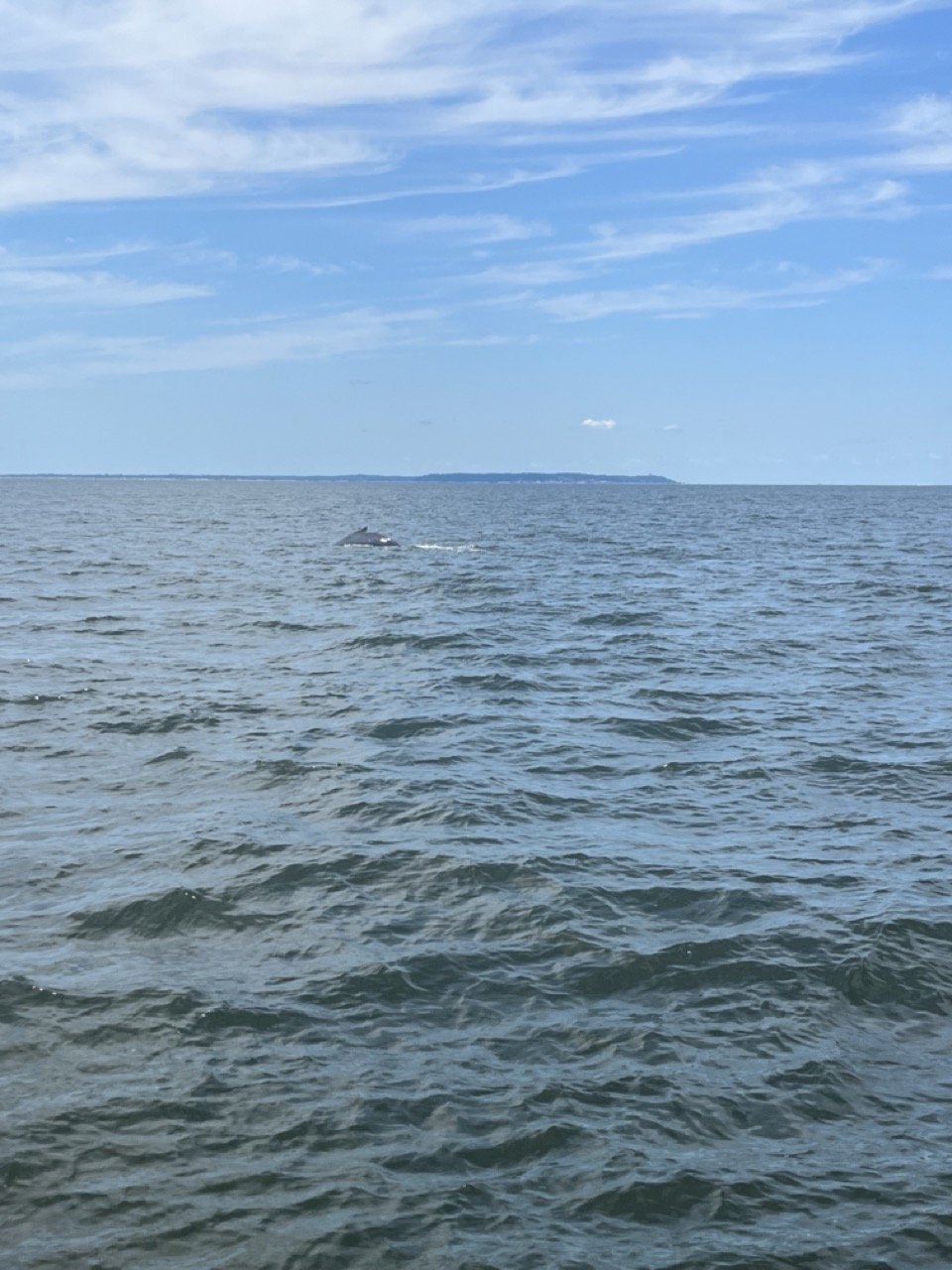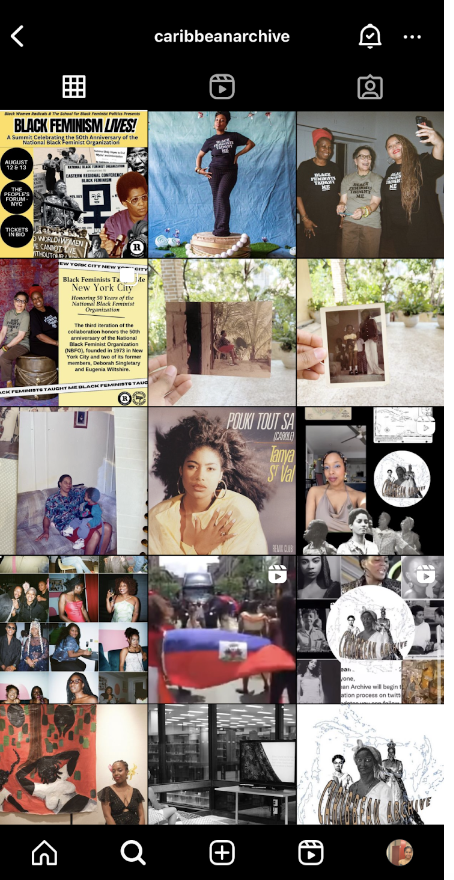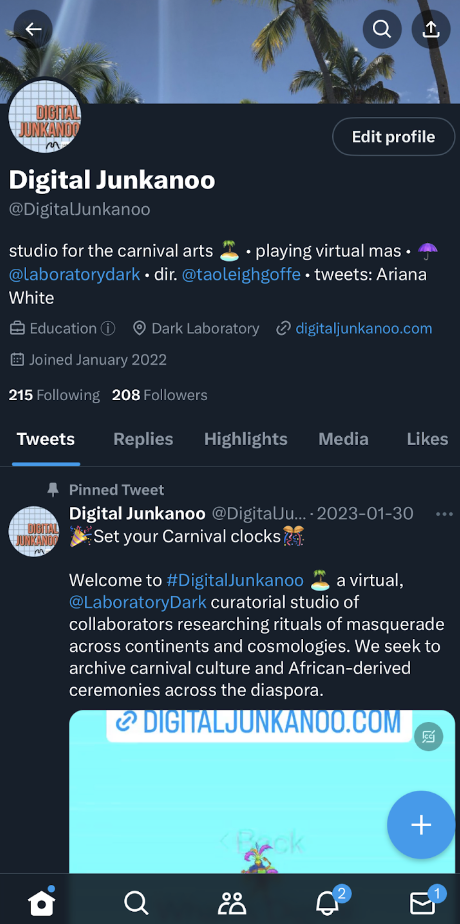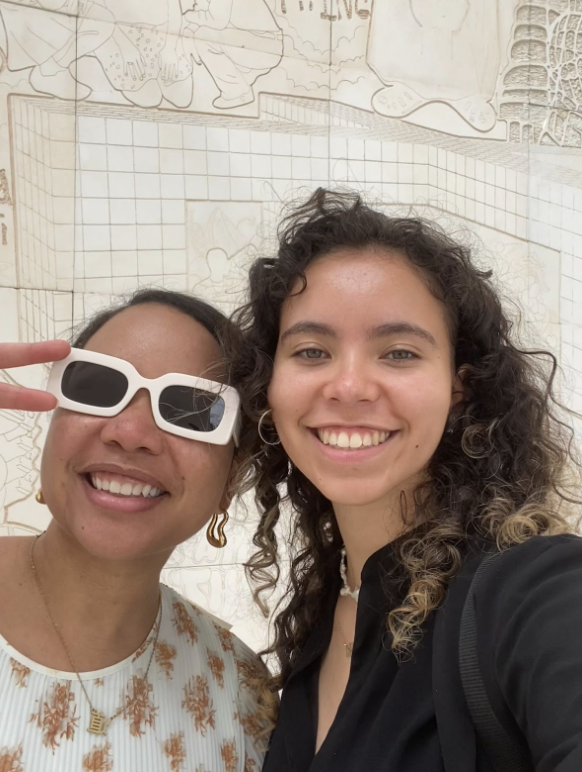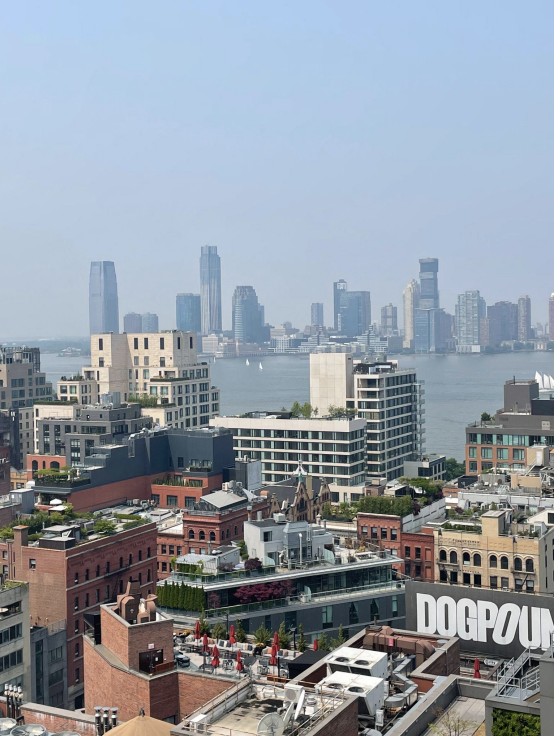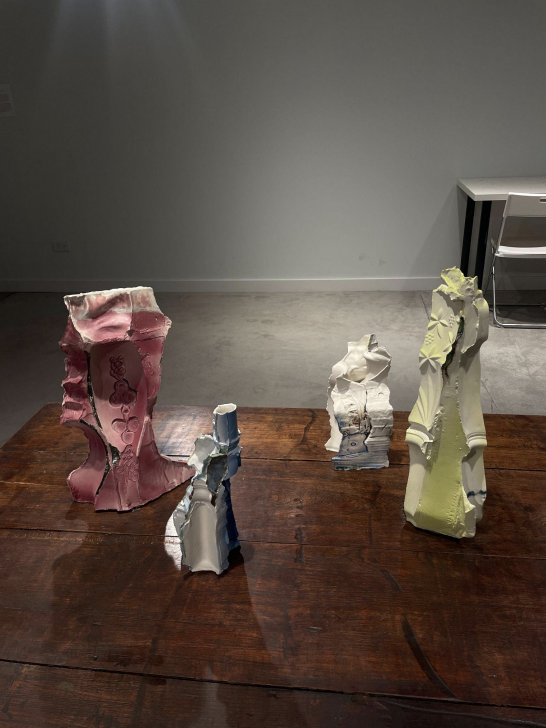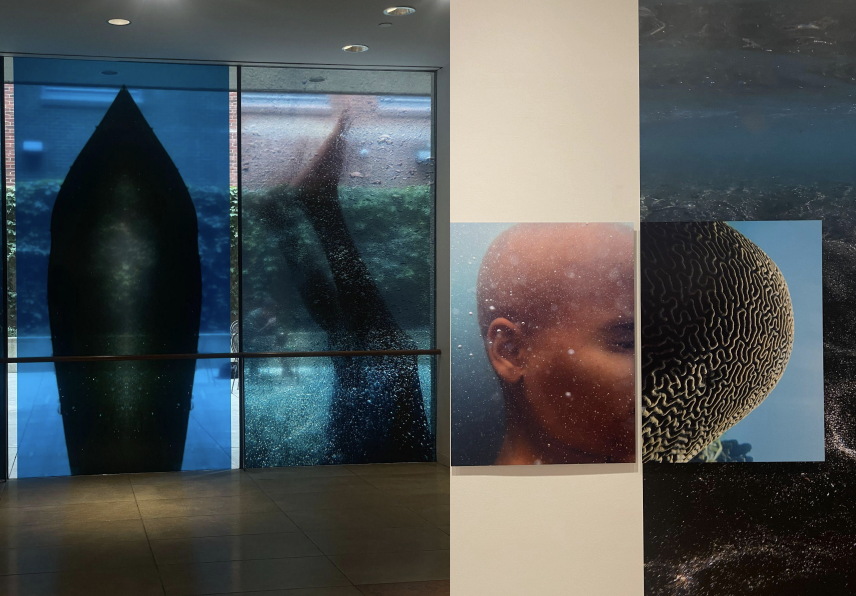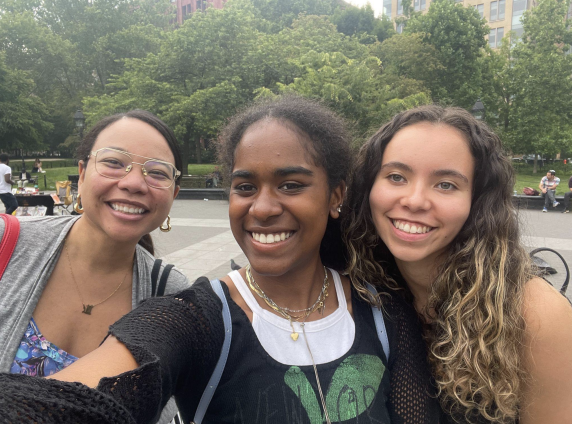LAB reports
LAB reports
Lab Reports from the New York City Dark Lab and Afro-Asia Group summer internship program June 6 - August 15, 2023. Weekly blog posts on activities and initiatives at the labs.
Editor: Kendall Greene (Amherst College, Senior ‘24)
Week 8/7/24-8/1, 2023
Kendall Greene (Amherst): This is our last week of the internship, and I feel melancholy about it ending. We explored so many new ideas and aspects of the city that I don’t think I would have thought to visit on my own. On Tuesday, we took a trip to the Bronx to visit the public garden, Wave Hill. I had never been that far north in New York before, and the scenery reminded me of the suburbs in Georgia.
Kendall Greene
This is our last week of the internship, and I feel melancholy about it ending. We explored so many new ideas and aspects of the city that I don’t think I would have thought to visit on my own. On Tuesday, we took a trip to the Bronx to visit the public garden, Wave Hill. I had never been that far north in New York before, and the scenery reminded me of the suburbs in Georgia. The curator gave us a tour of the residency space, which is now a gallery of the artists’ final projects. The present exhibition, This Place We Once Remembered, is comprised of the works of four different artists, and each had overlapping themes of ancestry and nature. I was drawn to Yelaine Rodriguez’s photographs that highlighted Afro-Carribean possibilities between God, nature, and ceremony. In addition to This Place We Once Remembered, I enjoyed entering the sunroom filled with Jacq Groves’s pieces and used the lighting in the space as an aspect of the artwork. I was immediately illuminated and smiling traversing through the intricated details of ceramic, stained glass, soil, bark, lichen, and tinctures.
On Saturday, we ventured into the American Indian Museum near Wall Street. The museum space unfortunately exists within an old US Customs building that is adorned with paintings of Christopher Columbus and other colonizers in the atrium. However, the rest of the museum is carefully curated with explorations of Indigenous artifacts and artists delving into Indigenous futurisms. The beginning of the exhibition held eel cages and traps, and I was reminded of our first week in the lab encountering the eel at Pratt. This time tools for capture were showcased rather than the eel that was captured, and I contemplated the difference between the intentions of these distinct enclosures. Although the museum is divided according to present, past, and future; time blurs as themes in each of the exhibitions overlap and intersect with each other. Through the final exhibition, I was introduced to the artist, Shelley Niro. Her rich creative career includes explorations in beadwork, photography, sculpture, painting, and film. The work is subversive as it challenges gender roles, physical space, and our conceptions of the future. I am deeply inspired by her expansive creative practice and grateful to witness older women artists have their work honored and displayed.
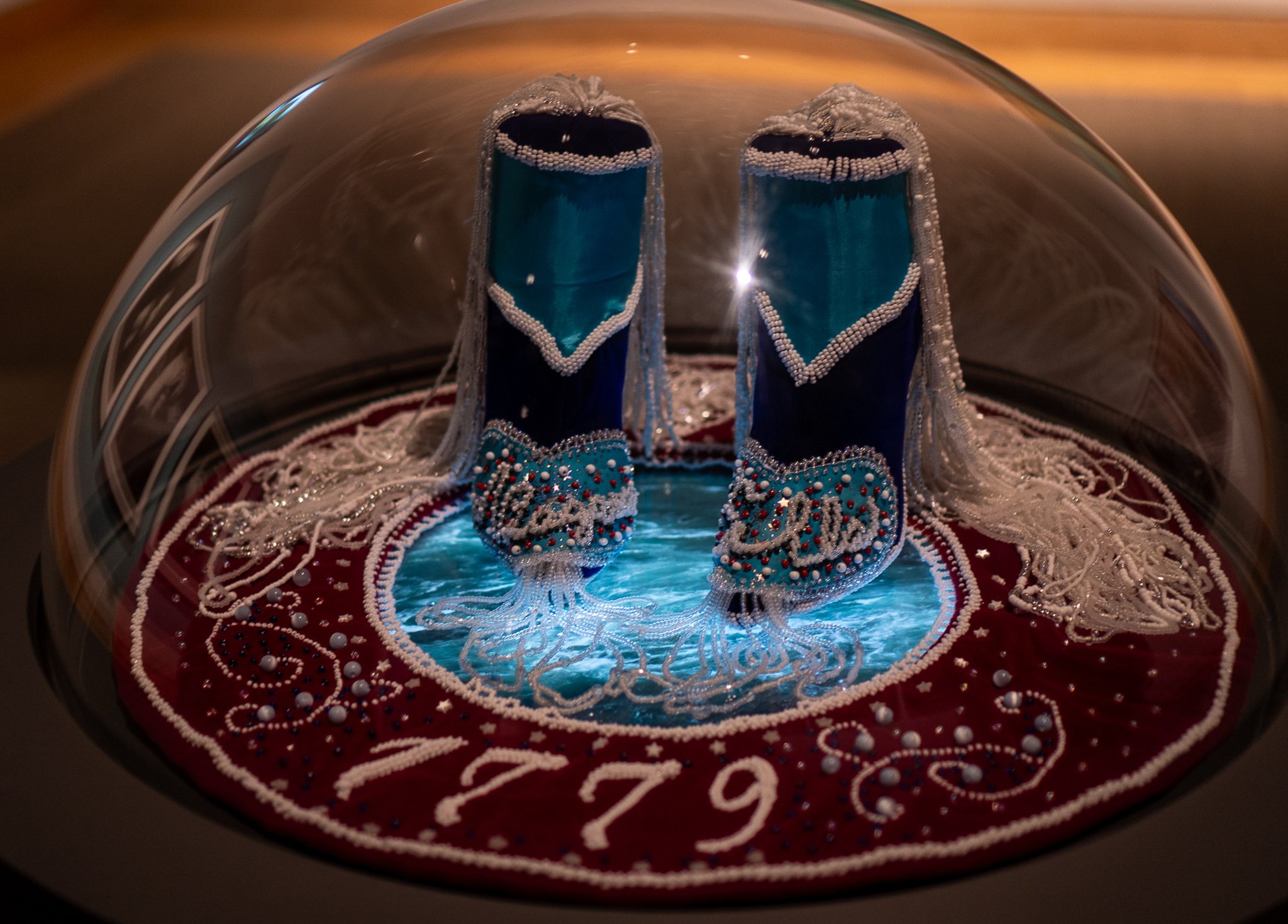
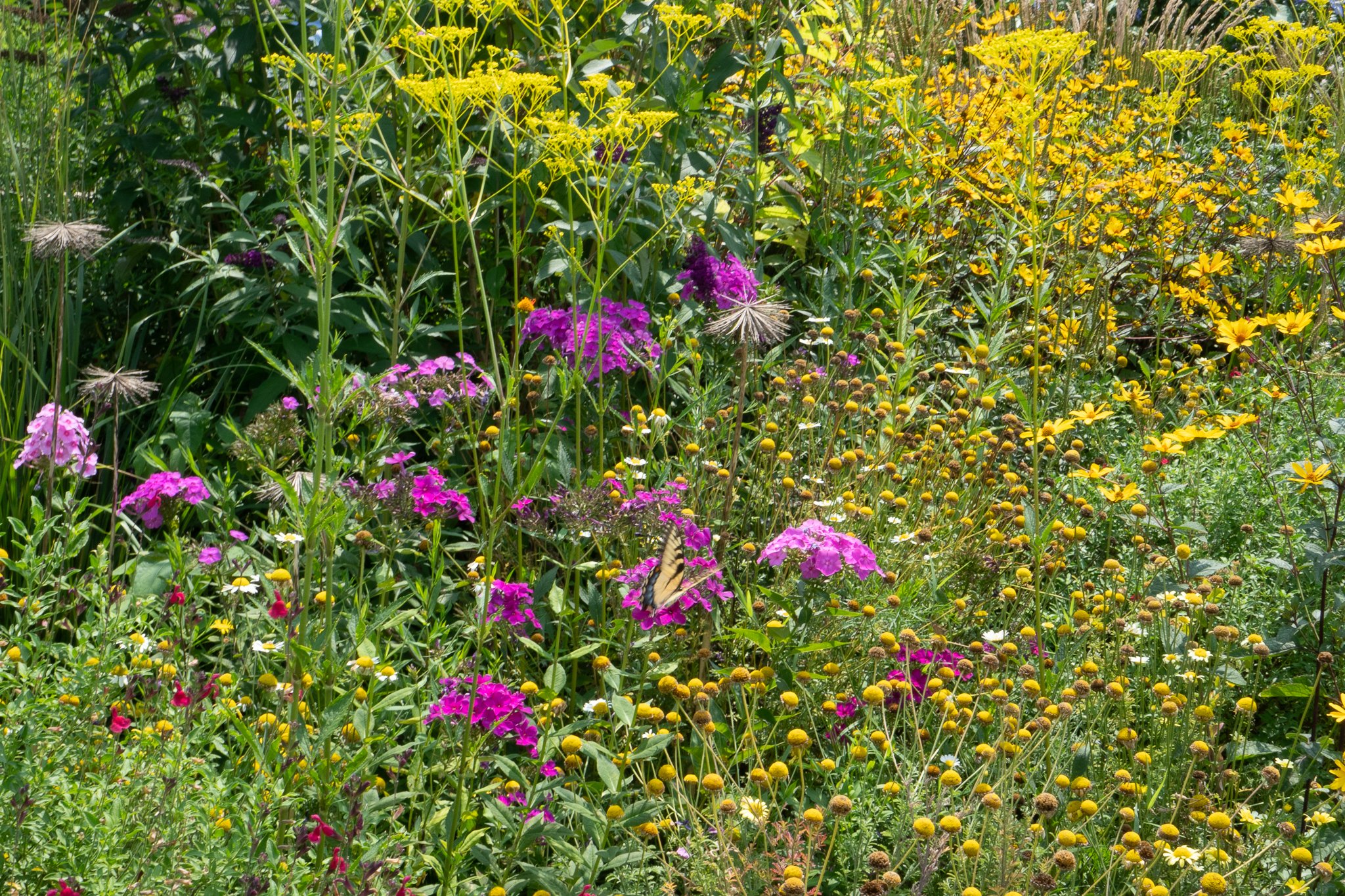
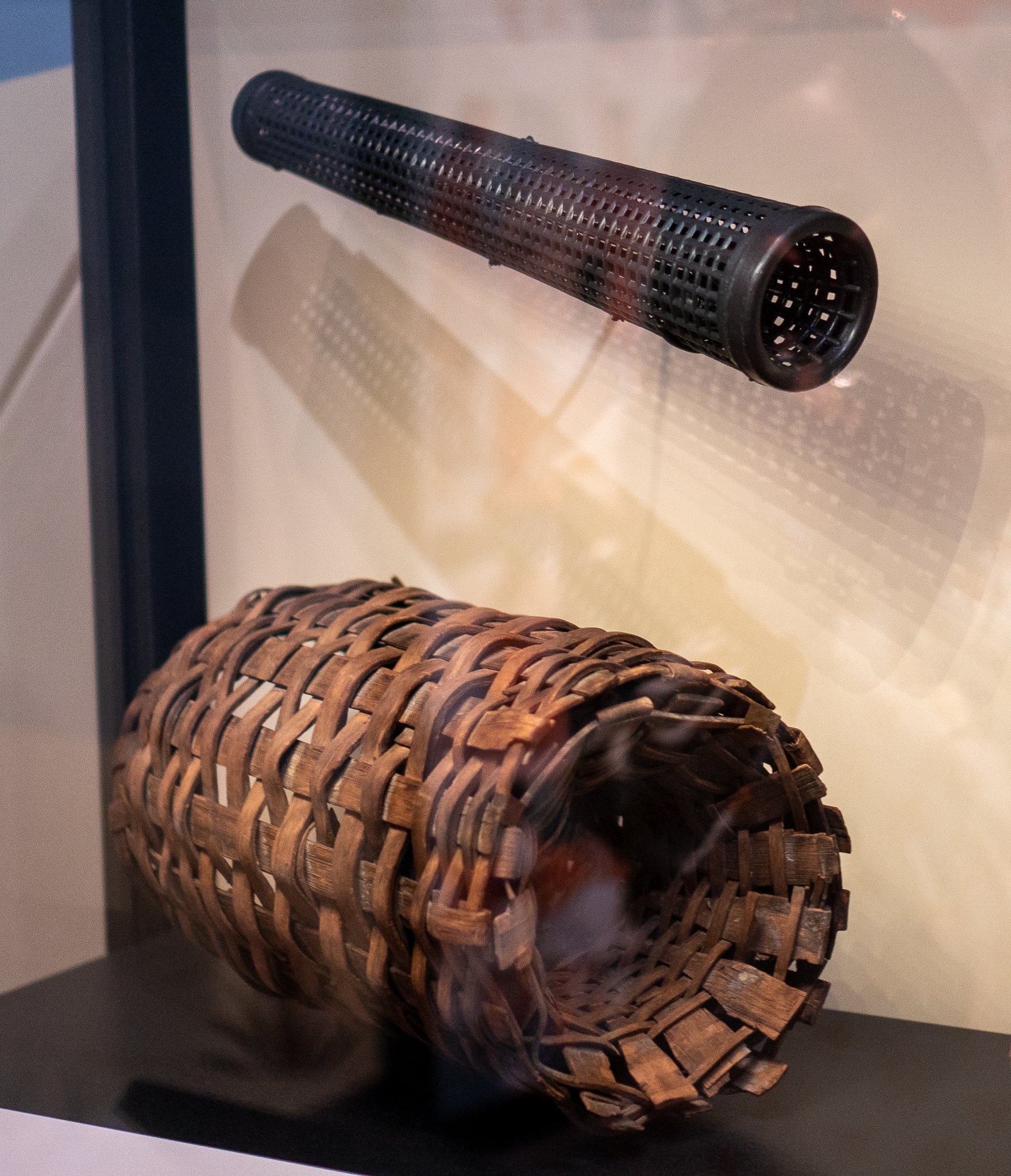
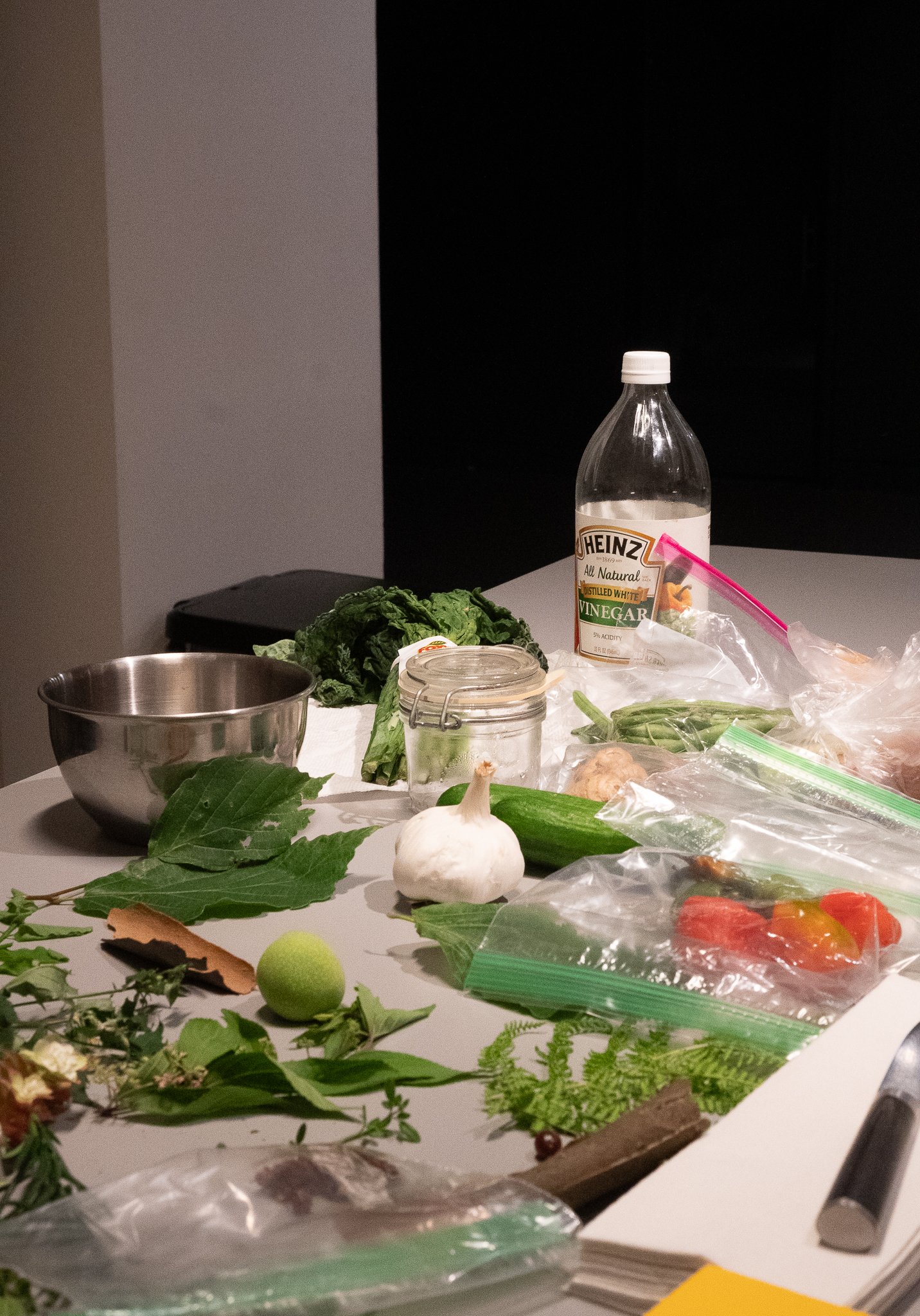
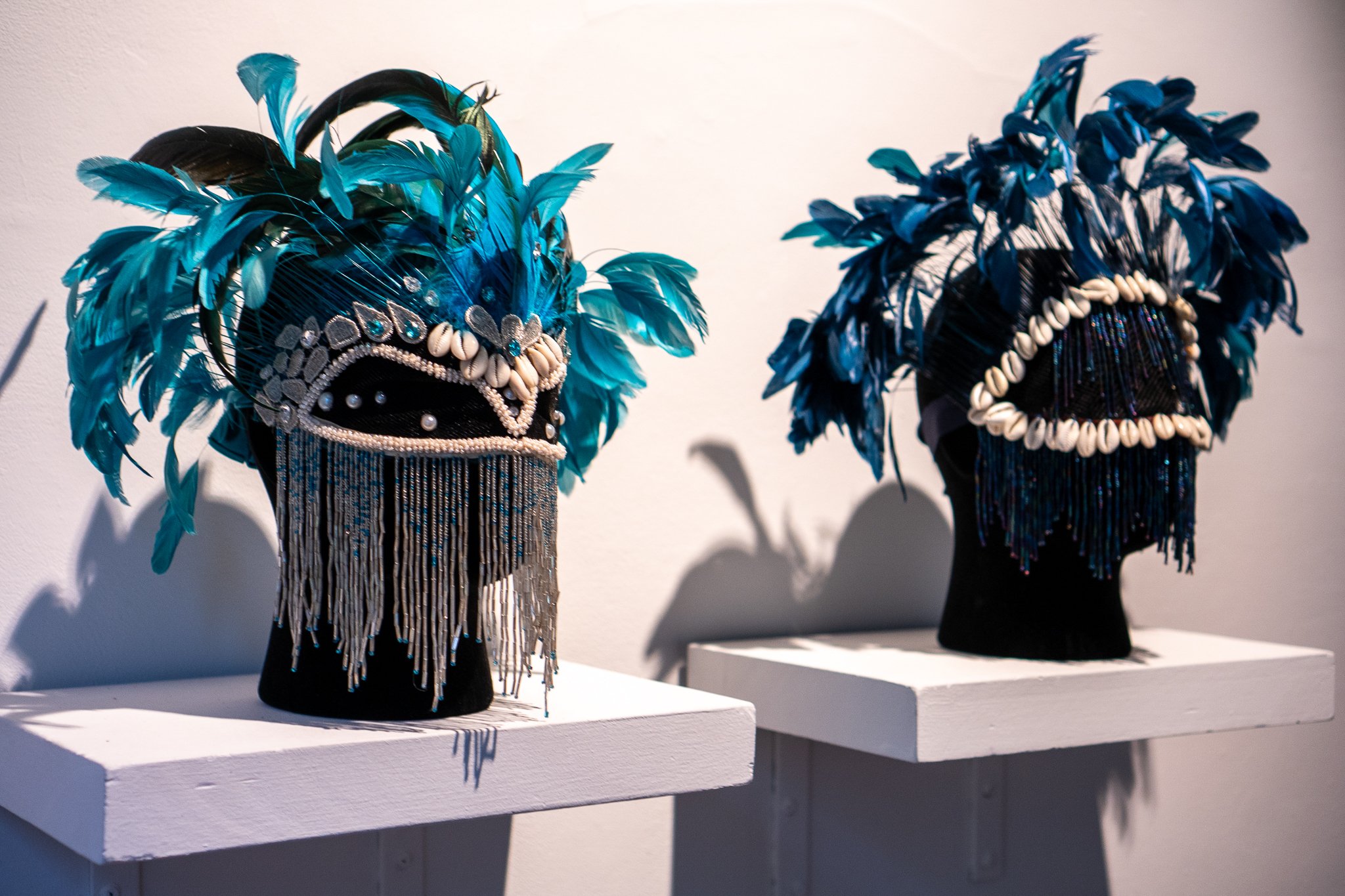
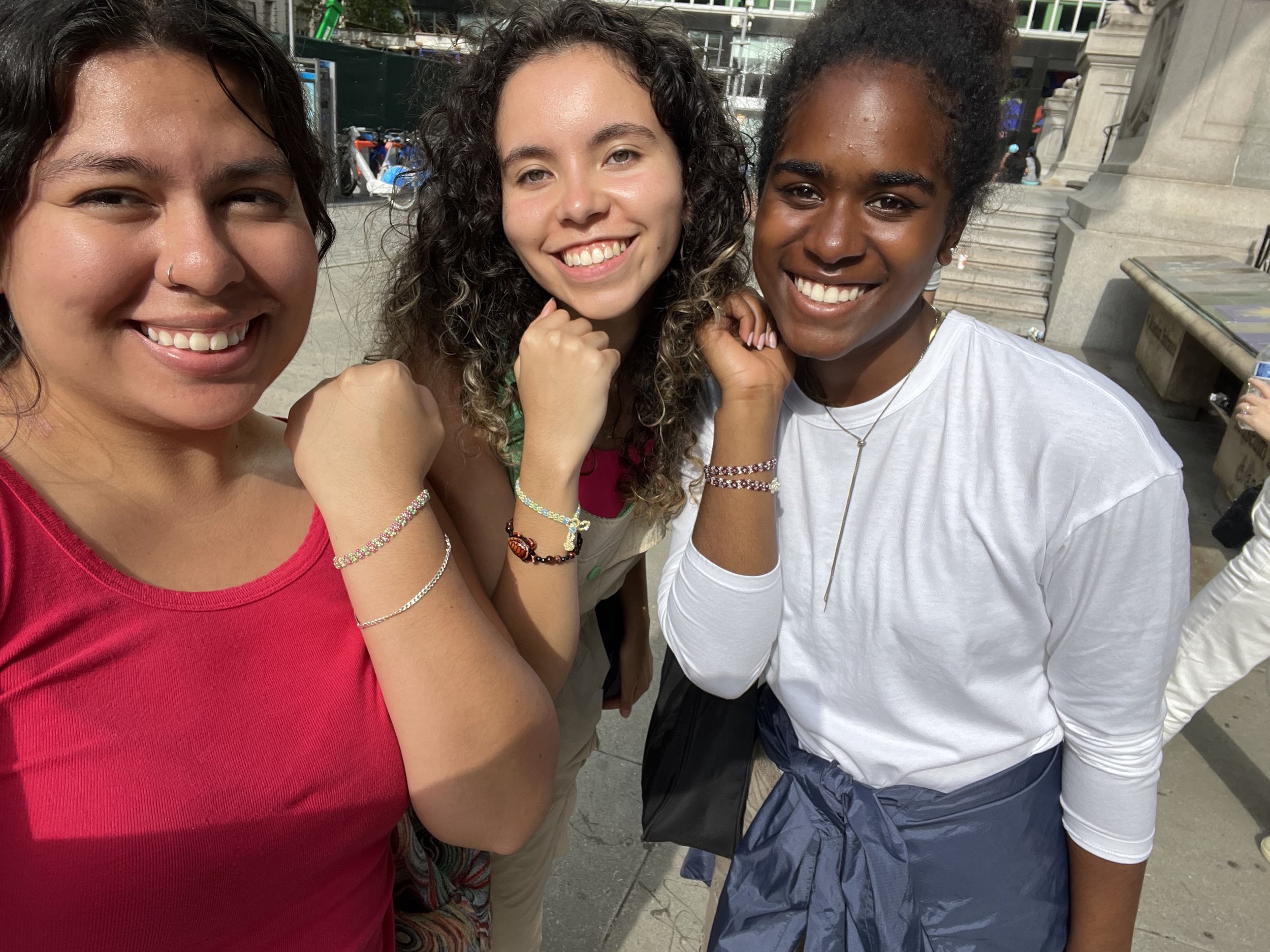
Ariana White
This past Saturday we went on a Dark Lab whale-watching trip on a boat that departed from Pier 11. New York and New Jersey grew smaller as we sailed farther and farther out into the Atlantic Ocean. When the land was no longer visible, the jet-propelled boat came to a stop and we waited for any possible whale activity. Scientists (I assumed) were located on the third floor of the boat overlooking the ocean. I kept my eyes peeled on their movements as they would often point to the areas where whales resided. After a couple of minutes of waiting, an announcement was made on the loudspeaker that we were near one baby whale. We were let out onto the boat deck and waited to see any movements. In an instant, a large whale fin poked out of the water before diving back in. If you blinked you would’ve definitely missed it. I spent the next couple of hours gawking at Humpback whale activity especially when we drew close to a pair of particularly active whales. They played with each other and the boat and even did, what seemed to be synchronized swimming. Not only did we see humpback whales but we learned about their history, food sources, habitats, and contributions to the oceanic environment. As whales defecate at the surface of the ocean they provide nutrients for the microscopic animal and plant plankton species that are food sources for small fish and aquatic species. This makes humpback whales a keystone species vital in maintaining the balance of the ocean's ecosystems.
After getting off the boat, I got a nutritious chicken kale Caesar salad with fried halloumi cheese for lunch. Dr. Goffe, Kendell, Maria, and I then made our way through the financial district to the old Customs building now the “National Museum of the American Indian”. We made our way through various exhibits with contemporary, classic, and revolutionary artwork. The museum was not only dedicated to showcasing artwork but retelling the narrative of indigenous peoples and communities within America and, particularly New York. We examined the space once used, for trading goods, by white colonizers and discussed the message sent by erecting a museum there. We learned and questioned, and were impacted by the power of art as tools for storytellers. We met a fan of Dark Laboratory who had coincidentally spent time working at the New York Society Library.
Maria Aguirre
This week started off as we headed to a part of the city I had never explored before: the Bronx. Late on Monday night, I typed “Wave Hill” in my Maps app, eager to chart the route for the next morning. I quickly realized this commute would become a trip of its own.
Navigating through unfamiliar roads and buses, Kendall Greene and I got lost. As we approached Wave Hill, the landscape transformed until eventually revealing meticulously cared-for gardens. Here we made our way to a house of art, where treasures highlighting people of color were being showcased. As we made our way out, we were greeted by the breathtaking view of the Hudson River.
Within the embrace of Wave Hill’s serenity, I felt like I had uncovered a secret. Away from the city’s noise, it was a sanctuary offering nature’s embrace. However, it prompted more than admiration; it sparked contemplation.
While exploring the gardens, I sent a picture to my friend Daniel from the Bronx, and he had no idea where I was. Remembering the adventure it was to get to the place, it all started to make sense. This place was a secret. The lack of transportation as well as the windy roads hinted at the exclusivity that such treasures often carry. But a treasure like this should be accessible to its holders, especially in the Bronx.
The rest of my week was busy as I came to my second to last week of work in the city. On Thursday, I led a Social Media takeover on Instagram. I don’t have social media so it was interesting to see how I interacted with the platform both as a consumer and a producer. In the evening, we had a lovely studio visit with artist, Cecile Chong. Here we learned about her background as an artist and as a person. We engaged in a beautiful conversation discussing the influence of trade in art from all over the world, from Asia to Latin America. As we ended our conversation I left feeling happy, and once again, grateful. The things I have seen during my internship have allowed me to understand the broad and large complexities of the world and more importantly: people. I feel like I am becoming more curious about every little thing around me.
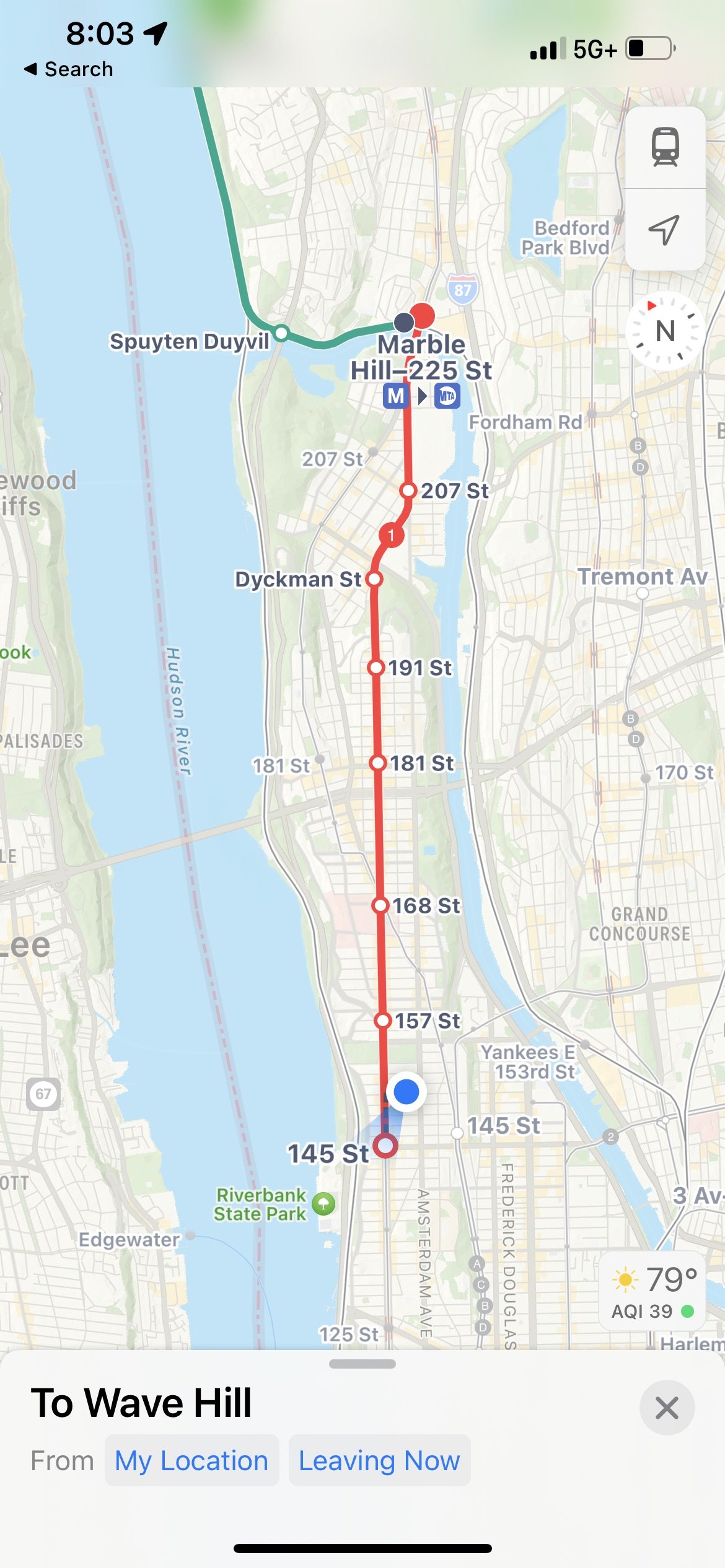
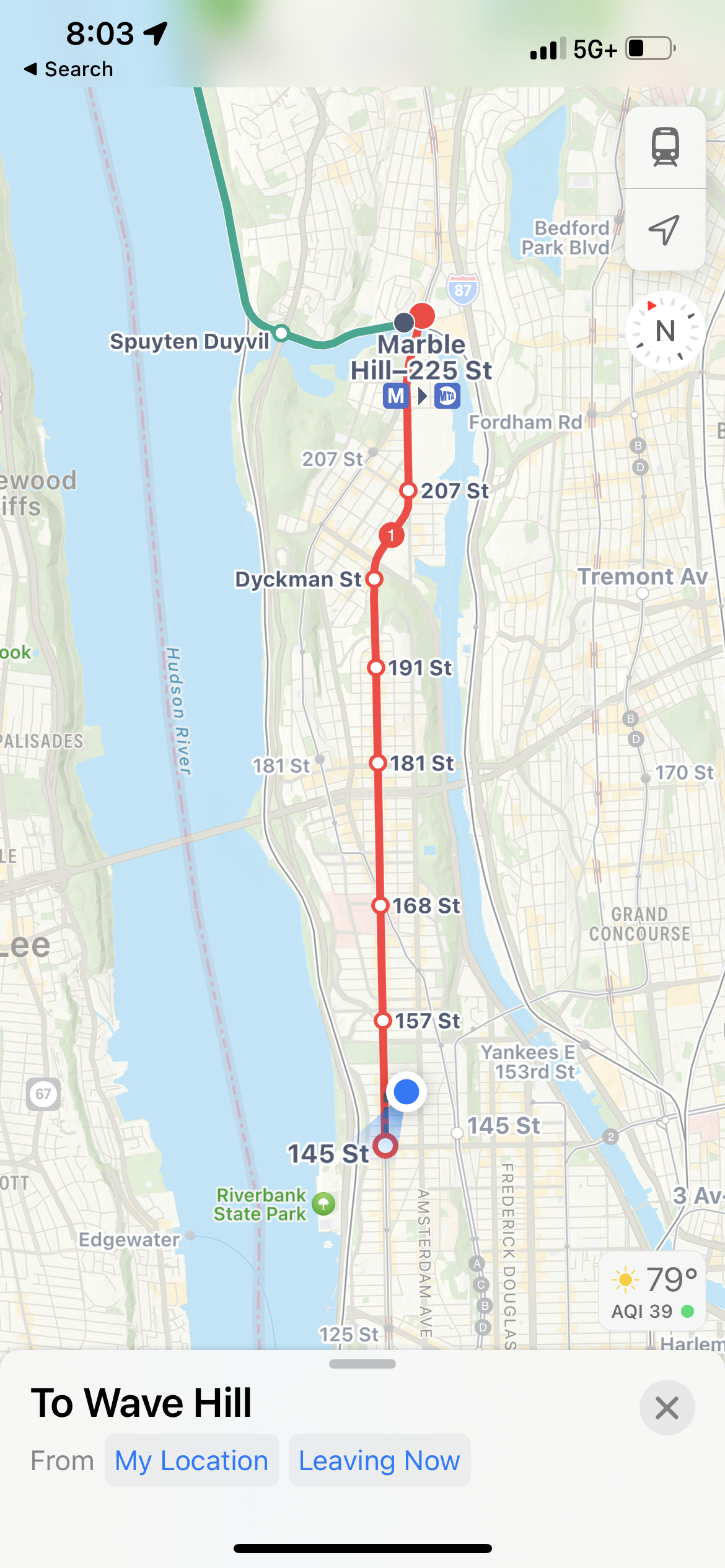

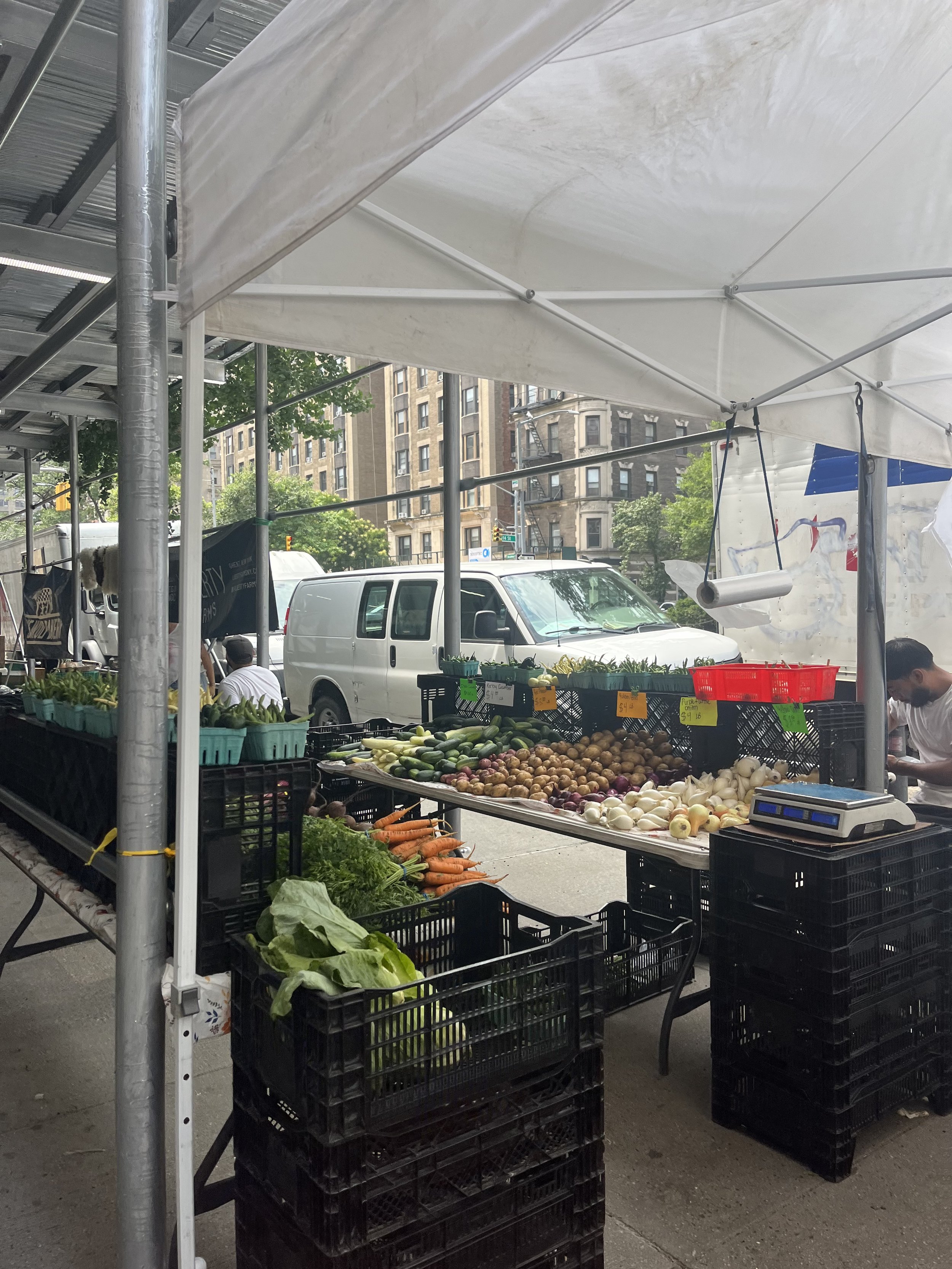

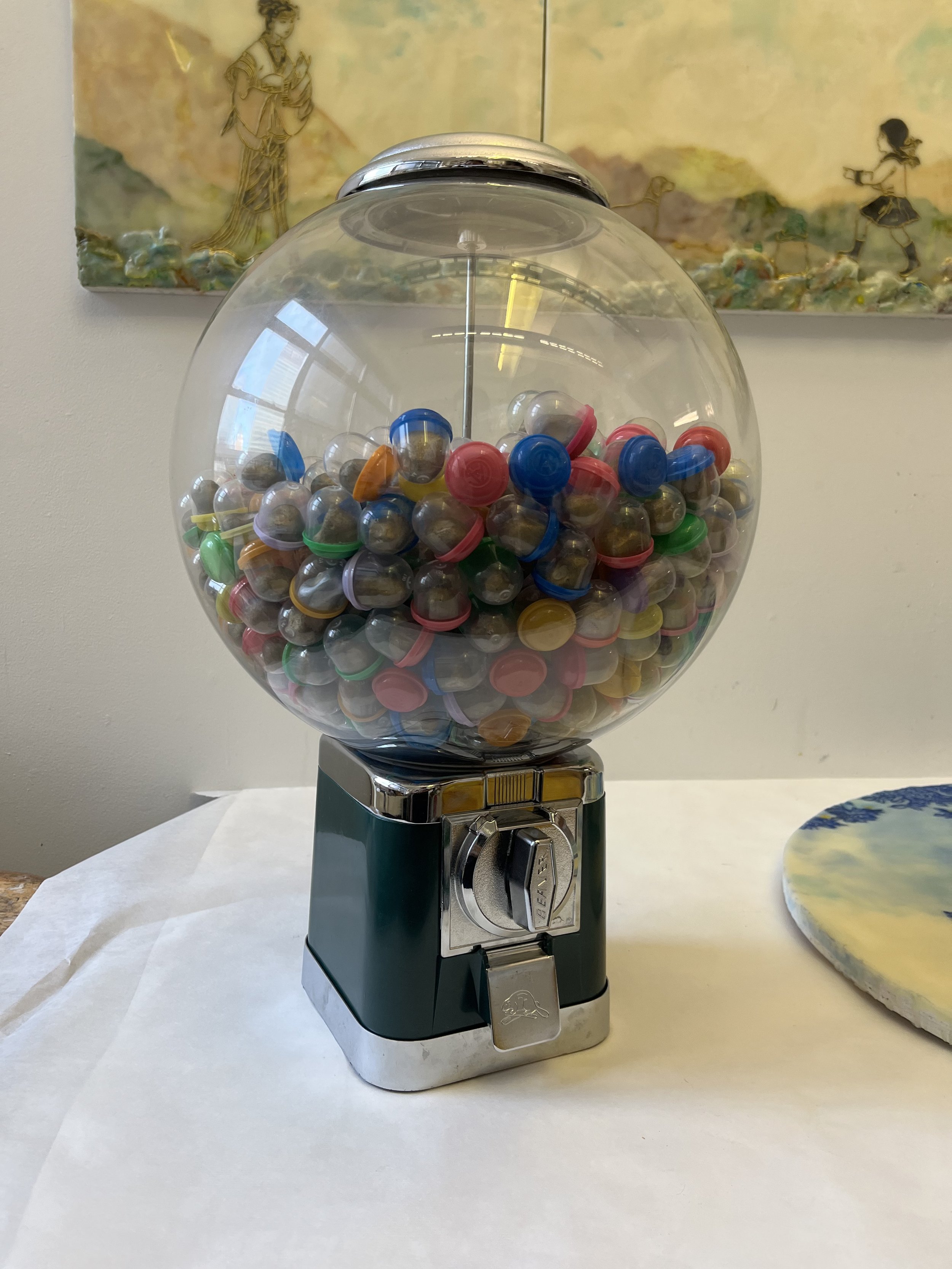
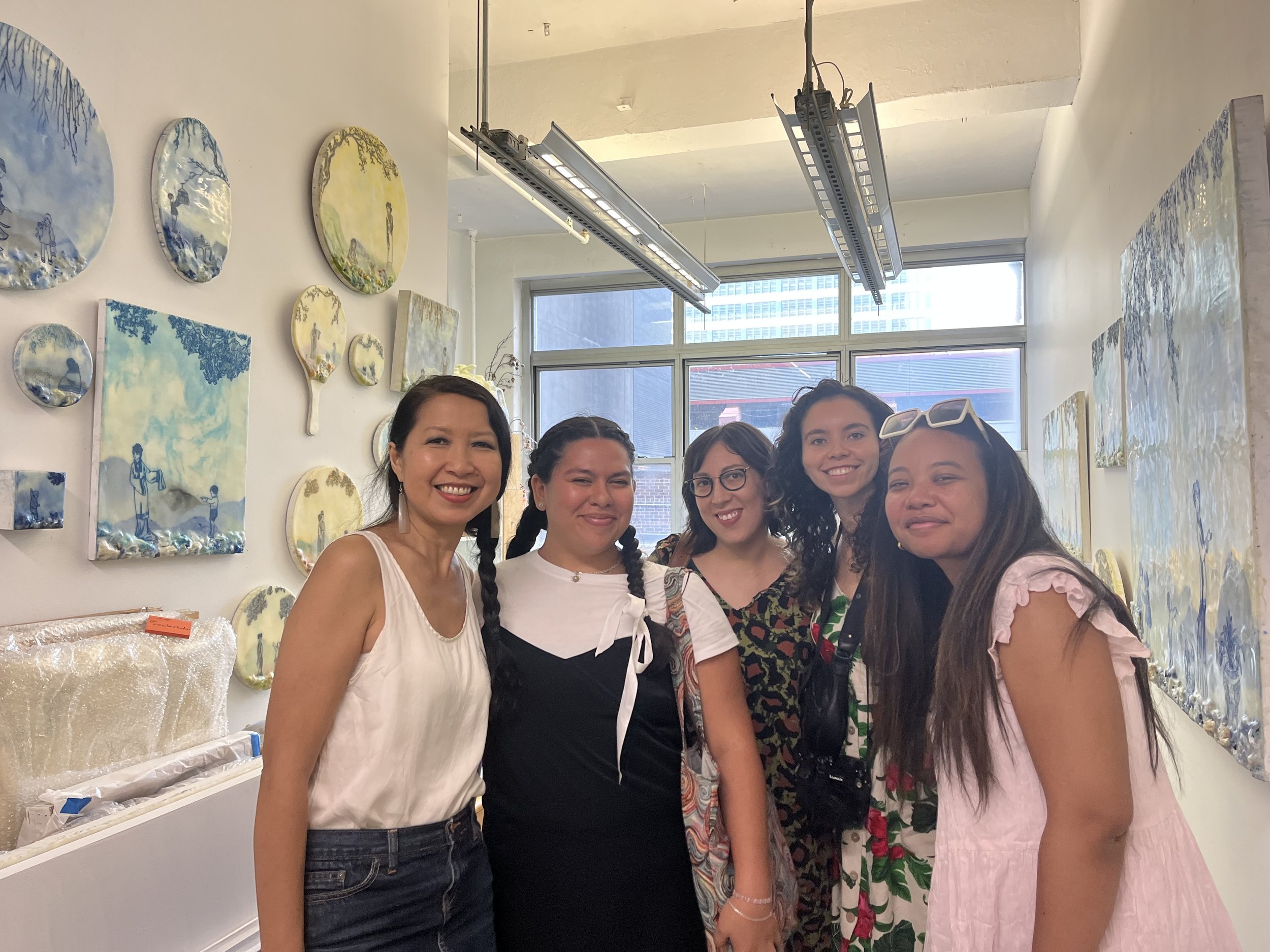
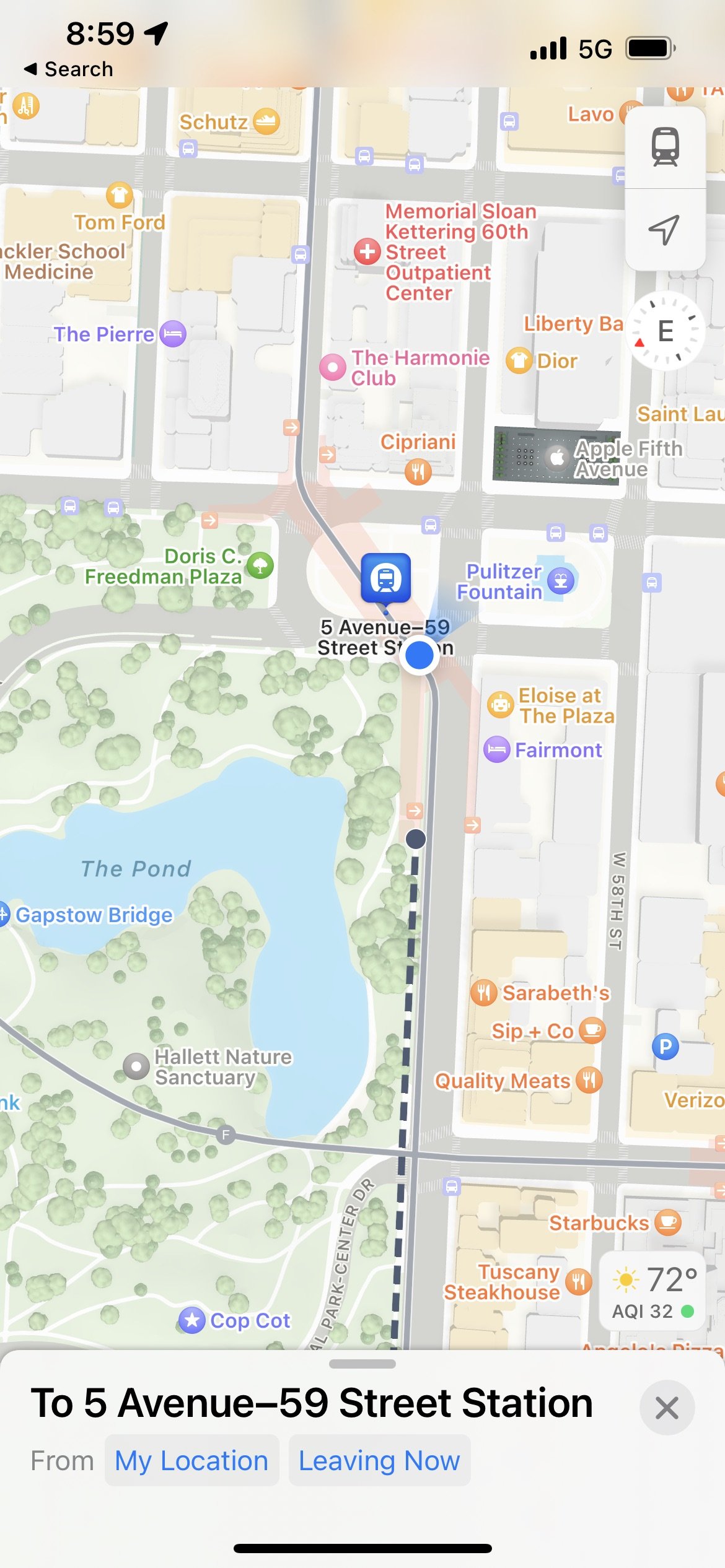
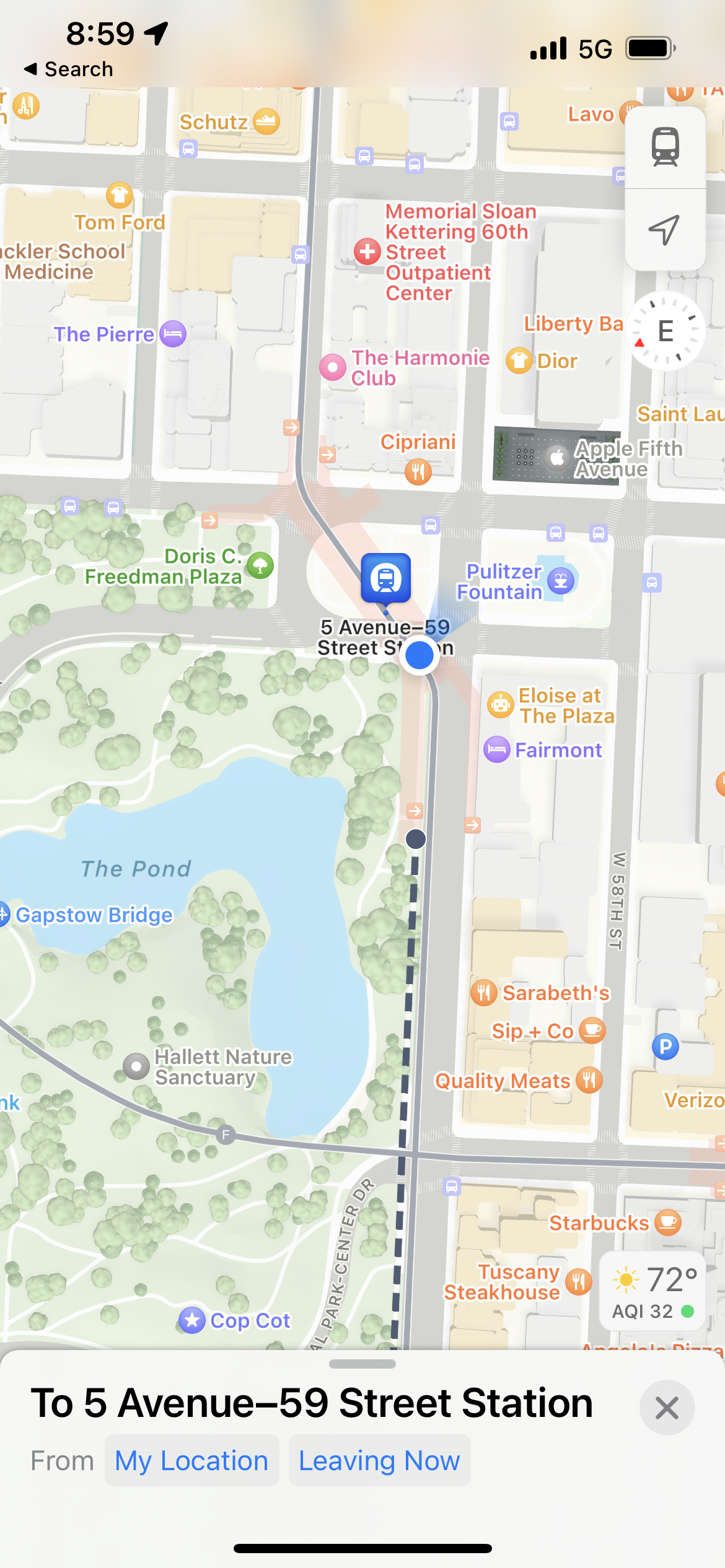
Week 7 / 7/17-22, 2023
Kendall Greene (Amherst) : “After those presentations, we visited the National Museum of the American Indian for lunch and the United States Botanic Gardens. Once we returned to the library, I heard Maya Cade discuss her work with https://blackfilmarchive.com/ and the feminist ethos behind documenting tenderness. Dr. Goffe’s panel was about members of the AAPI community engaging with Digital Humanities. “
Kendall Greene
At the start of the week, Dr. Goffe and I visited Washington, D.C. I spent time with my family and attended events at the Library of Congress for their Digital Humanities conference. The event started with listening to the interns at the Library of Congress discuss the research that they were doing. I was intrigued by a student who was working with the “Born in Slavery: Slave Narratives from the Federal Writers' Project, 1936 to 1938” in the Library of Congress’s archives. She decided to trace how previously enslaved women styled and maintained their hair during slavery and after emancipation. Another student traced solidarities in posters and organizing between African and Asian diasporic people. Her exploration connected directly to the values of the Afro-Asia group, and I was introduced to more of our entangled histories.
After those presentations, we visited the National Museum of the American Indian for lunch and the United States Botanic Gardens. Once we returned to the library, I heard Maya Cade discuss her work with https://blackfilmarchive.com/ and the feminist ethos behind documenting tenderness. Dr. Goffe’s panel was about members of the AAPI community engaging with Digital Humanities. I learned about the solidarities existing between people of the continent, their discrepancies, and the innovative ideas educators were applying in their classrooms regarding identity.
At the end of the week, we went Whale Watching off of Pier 11 near Wall Street. For the first half of the excursion, we stared into a sea of blues and whites with the Manhattan skyline in the backdrop. After a seemingly endless stretch of time, we heard the loudspeaker announce that there was a whale sighting at that boat’s 11 o’clock. I bolted over, and we were able to see three whales. Two were swimming together, and we watched one of them poop and fertilize the water. A whale approached directly in front of the boat, and I could hear their cry and the splash of their tail. I almost jumped out of my skin while making pictures and videos.
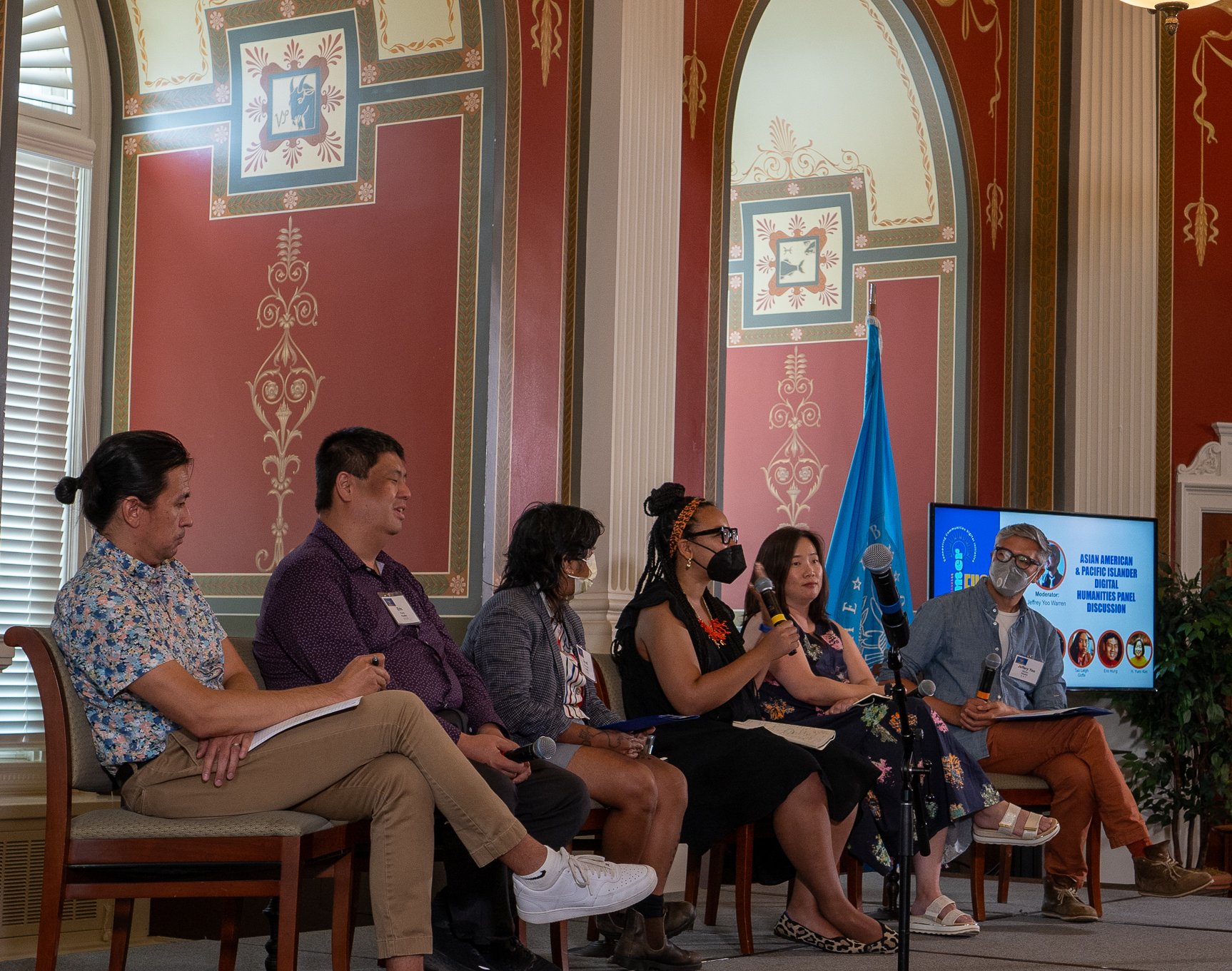
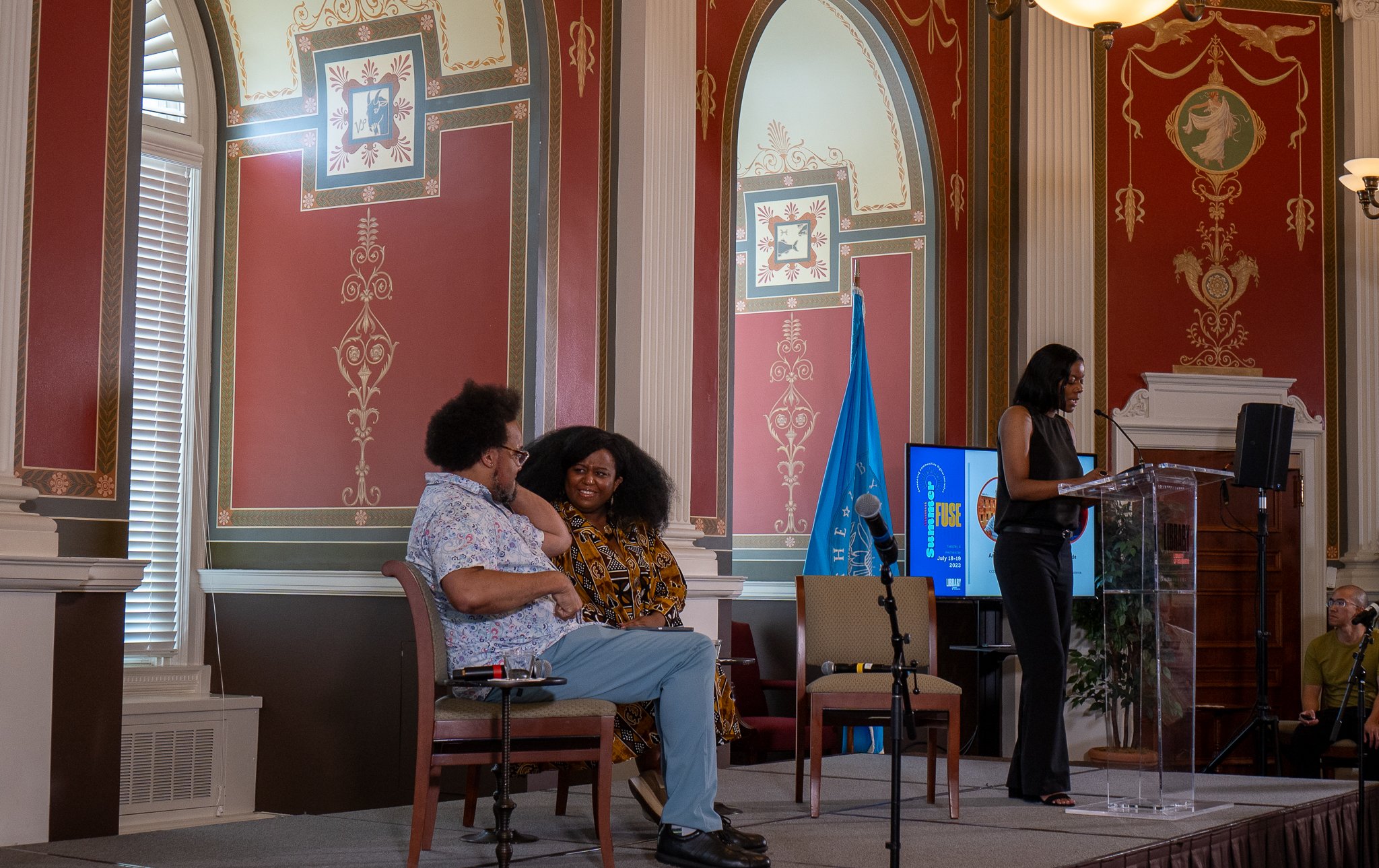

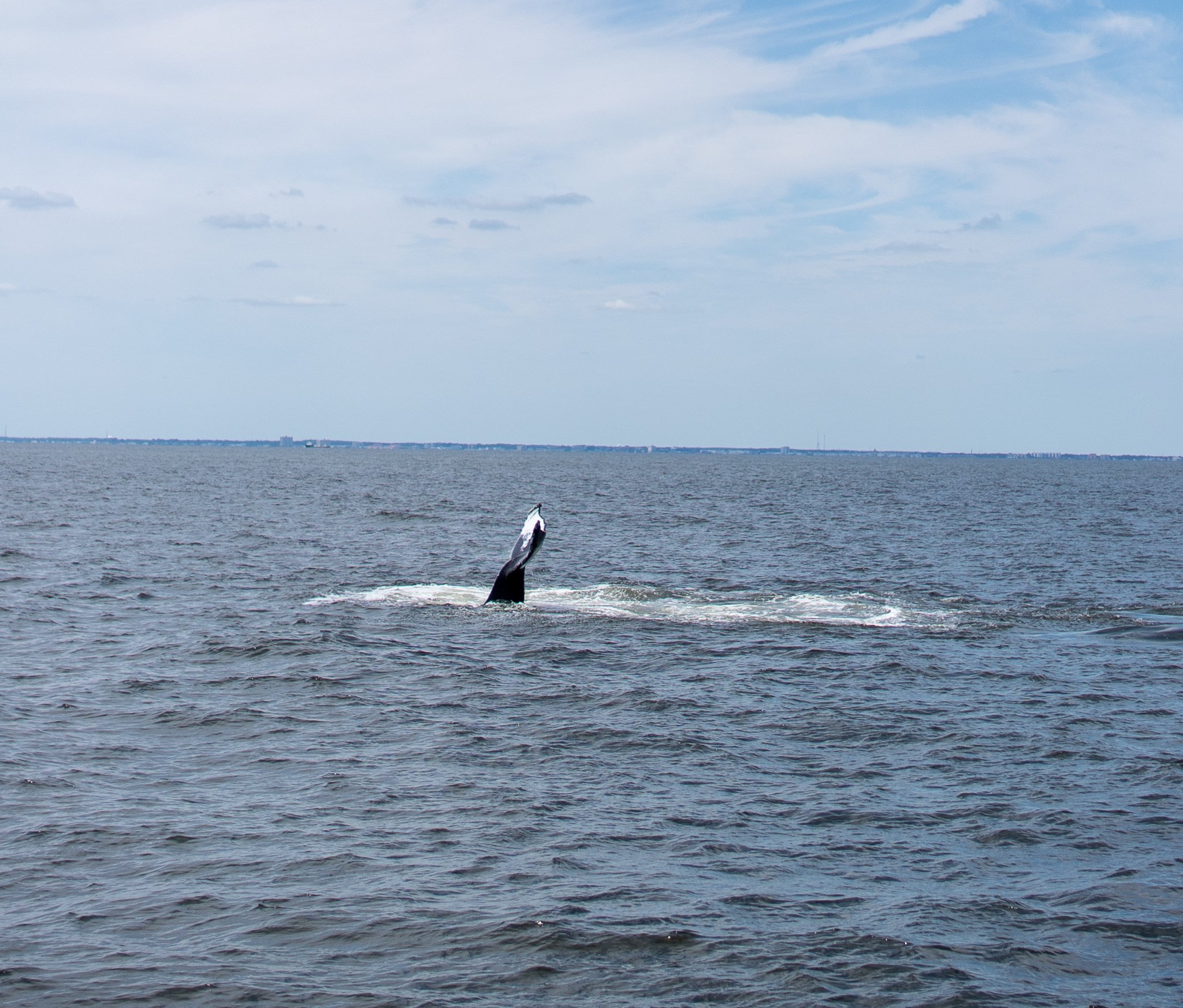
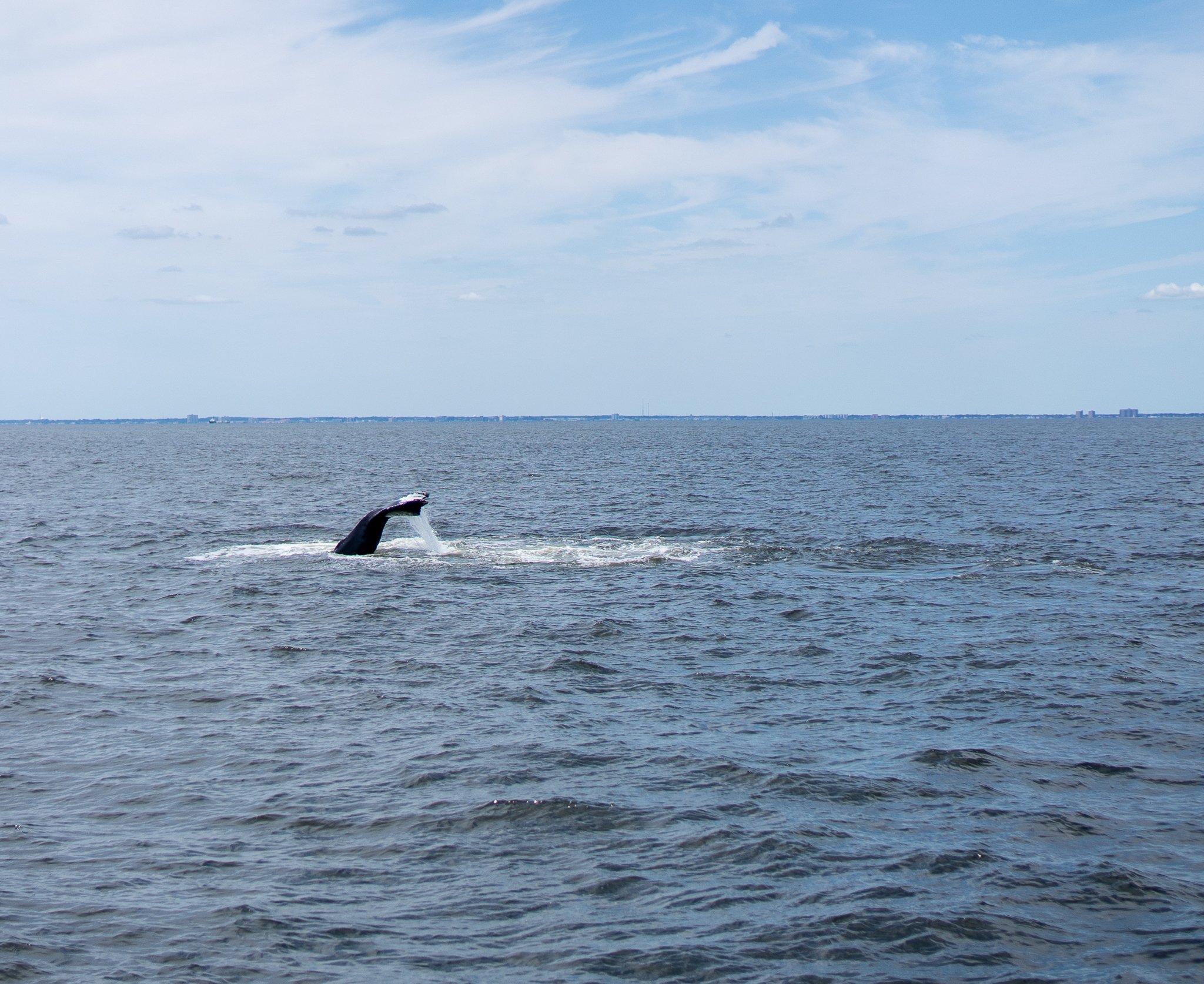
Ariana White
This week was my turn to facilitate the “Instagram takeover,” and I thoroughly enjoyed sharing aspects of my day and the work/ research I had accomplished for Dark Lab so far. It was a chance to engage with community outreach, communication, and share info in a concise yet creative way.
Dr. Goffe, Kendall, Maria, Celeste Layne, Monica Ramírez Bernal, and I took a trip to the Guggenheim Museum which was exhibiting art by Sarah Sze and Gego. We started at the top floor which culminated in a room meant to engage the senses with sporadic visuals and audio. In the center of the room was an assortment of natural and non-natural objects such as a computer, plants, books, strobe lights, and linear structures. This was a pattern across Sze’s work as she combined distinct shapes and lines with sand, crumpled paper, or moving visuals. Her work demonstrated chaos amongst structure and played with color and light, creating pieces each viewer wanted time and patience to grasp.
Gego contributed a similar style that focused more on the structure and strength of lines and points. Gego’s work was accompanied by her life story and took the viewer through a narrative as they walked down the museum’s unique architecture. Gego worked with multiple mediums, creating various pieces before moving on to the next. Gego wove paper and metal and painted shapes before dedicating time to her multidimensional wire work.
We ended the day with a visit to Massawa restaurant for some Ethiopian food and an AMA (“Ask Me Anything”) with Monica. We spoke about Monica’s educational experiences in both Mexico and NYC and discussed their differences and similarities as it pertains to academic freedom and exploration. I learned about Monica's experience as an international student who isn't allowed to acquire external work experience during her study.
Monica has also written a book titled The Ocean as Landscape that highlighted and examined the oceanic waters and the ocean floor as terrain, as opposed to uninhabitable and deadly water bodies. This mindset has allowed humans to see the ocean as a big black hole that we can dump our waste into and treat poorly. Monica recognized the benthic and pelagic organisms that thrive on the sea floor and described the ocean as part of our topography, forcing us to see the ocean instead as an assortment of thriving ecosystems.
Maria Aguirre
This Saturday, some members of the Lab and I embarked on an adventure to meet the large mammals that call the ocean their home – whales. As we set sail, I couldn’t help but think of the people who had been on these waters before us. The thousands of people hoping to catch sight of these beings, some of them hoping to kill them.
Carried by the rhythmic tides, a nervous energy gripped me. The ocean has its secrets, and whether or not a whale would reveal itself was uncertain. However, almost as a response to my yearning, a sense of excitement rippled through the crowd of people as a whale was spotted. Majestic and serene, the whales emerged, broke through the surface, and said hello. My nervousness melted into awe as we watched the whales swim around us.
As they traveled through the expanse of the ocean, I felt a profound sense of gratitude to witness a moment of these creatures’ timeless existence. This summer the work that I have seen with the Dark Lab has made me consider the vessels of knowledge that exist on the earth. Without a doubt, whales have been witnesses to the horrors that have occurred throughout the Atlantic Ocean and have been victims of abuse. I am grateful to the whales and to the sea for the life that they breed.
Week 6/JuLy 10-16, 2023
Ariana White (Fordham): “Comparing almost every single country’s abolition days expanded my knowledge regarding regions of the world and colonial histories. It segued into research I conducted on Zainab Floyd and Caribbean Archive. Our interview provided cultural and personal context to Floyd’s passion for Caribbean Archive. I learned about Floyd’s journey through learning and historical research that led to her archival work. Her use of academic, art, NYC, and global spaces to acquire experience and research was eye opening and inspirational as I grappled with the final stages of the drafting process.”
Ariana White
I spent this week fully remote from the Catskill Mountains of Roxbury, NY, working on a middle school agricultural farm focused on sustainability and education. Having graduated in 2018, I worked as their alumni intern and engaged with students, ages 8-13, learning about sustainable agriculture, animal husbandry, and permaculture. When I arrived, the farm was almost the same as it was when I was a kid, with the exception of a large greenhouse at the foot of a hill that housed growing tomato plants and comfortable reading nooks.
It was a great place to conduct research as I worked to create an interactive visual presenting slavery abolition days around the world. Some countries had forms of legislation, in their constitution or in bills passed later on, that distinctly outlawed slavery and similar forms of labor. Much of that legislation was not instated until the 20th century due to years of colonization and oppression.
Comparing almost every single country’s abolition days expanded my knowledge regarding regions of the world and colonial histories. It segued into research I conducted on Zainab Floyd and Caribbean Archive. Our meeting/ interview provided cultural and personal context to Floyd’s passion for Carribean Archive. I learned about Floy’ds journey through learning and historical research that led to her archival work. Her use of academic, art, NYC, and global spaces to acquire experience and research was eye-opening and inspirational as I grappled with the final stages of the drafting process.
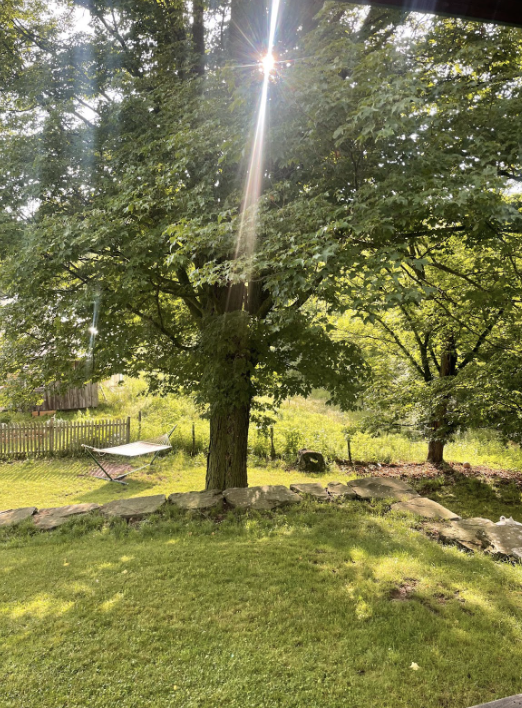
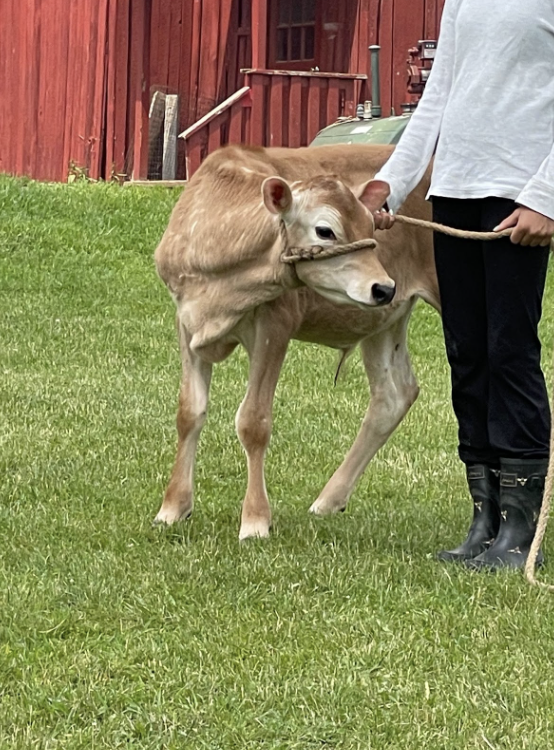
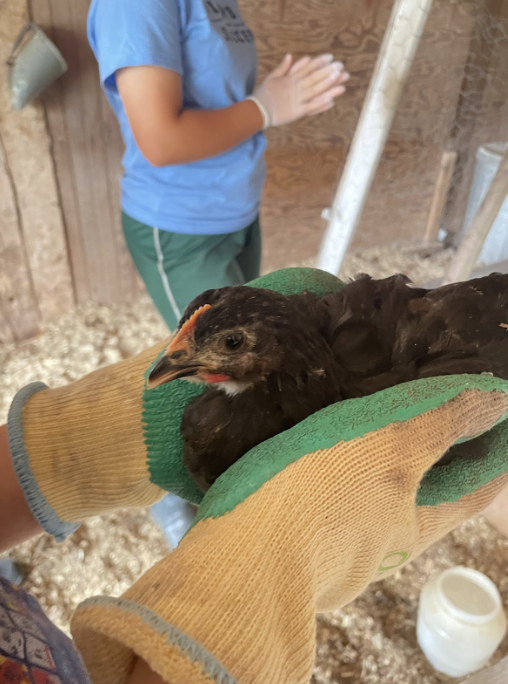
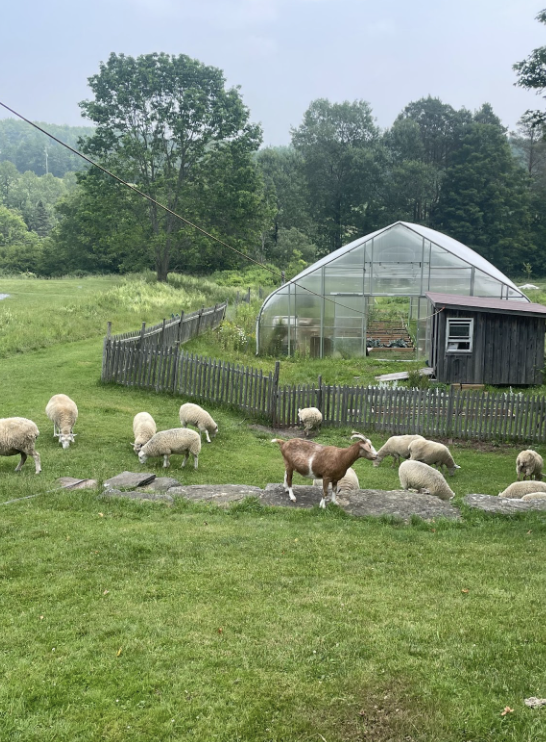
Kendall Greene
This week we were back in person, and I was more than excited. I had my own personal conversation with Jenny Lau, and we dove into her practices of organizing, writing, and cooking. I appreciated her reflections that ventured outside of my expectations. She connected the complexities of food and ingredients to her understanding of culture, aging, and being in relationships with others.
In Week Six, we had the opportunity to visit the Guggenheim and enjoy Susan Sze’s exhibition, “Timelapse.” The themes she explored seemed especially relevant to the thesis I hope to pursue next semester. She engages with our understanding of time and blurs the line between digital objects and the material realm. Her piece, “Timekeeper” was the most immersive section, and I was most intrigued by the small projections she had of different time zones and events happening concurrently in the various. “Times Zero,” inspired me to draw on the themes from Ruth Ozeki’s feature on the podcast, “On Looking.” In her podcast, she encourages people to spend deep, complete, and embodied time with a piece of artwork. She challenged how I approach my experience with museums. I encourage you to listen if you are interested in deepening your ability to be present and curious about a little Japanese history.
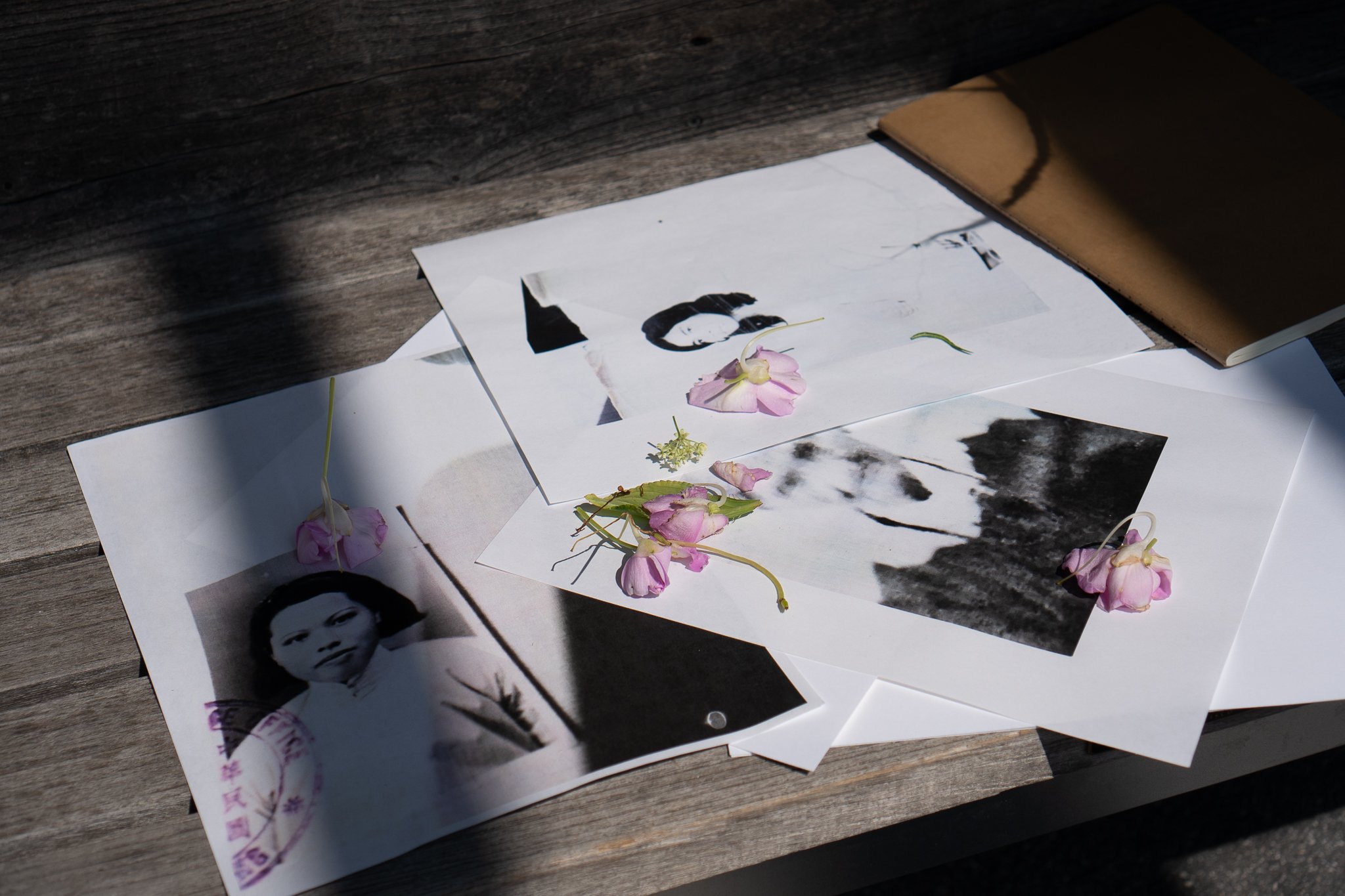
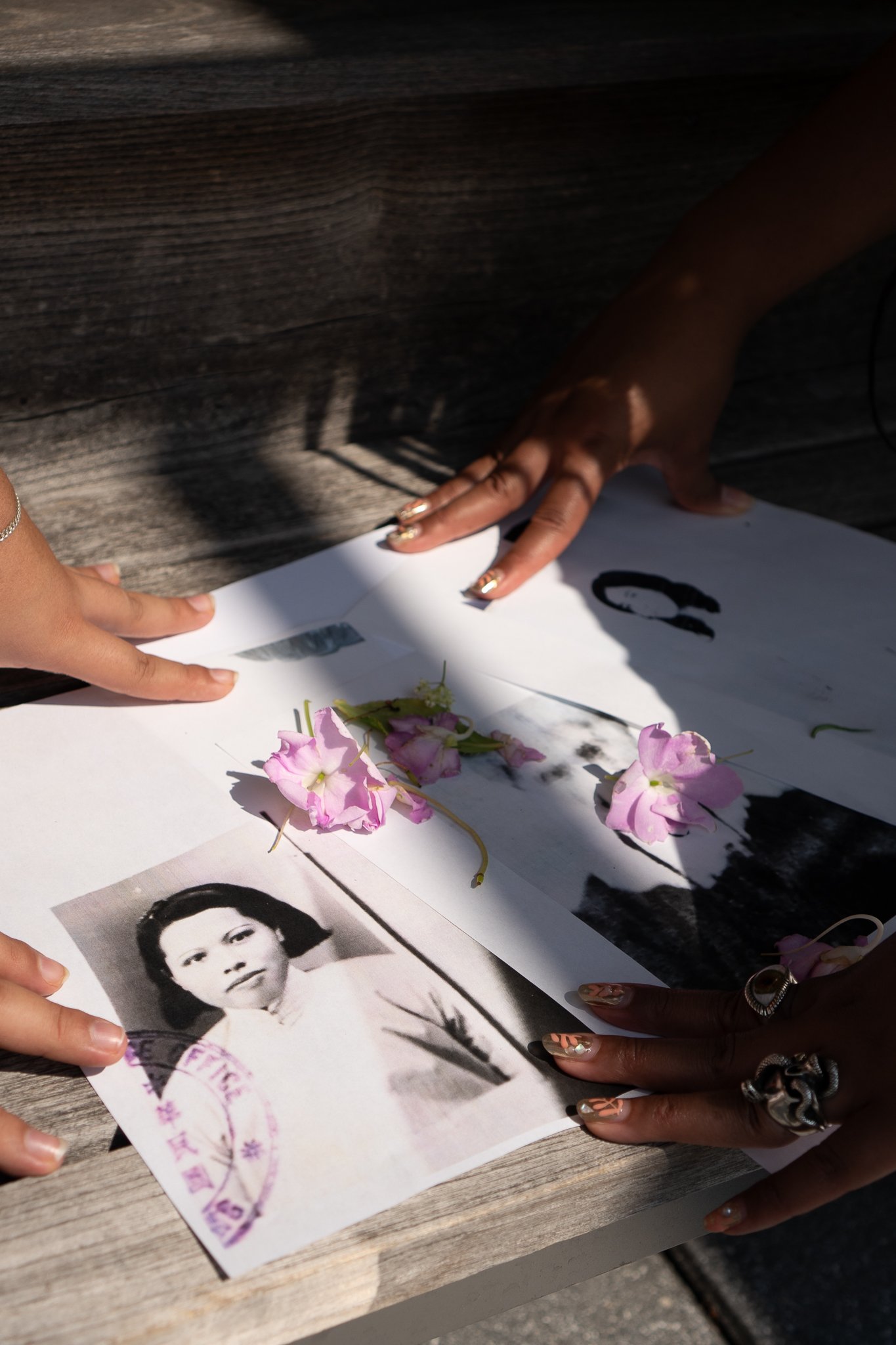
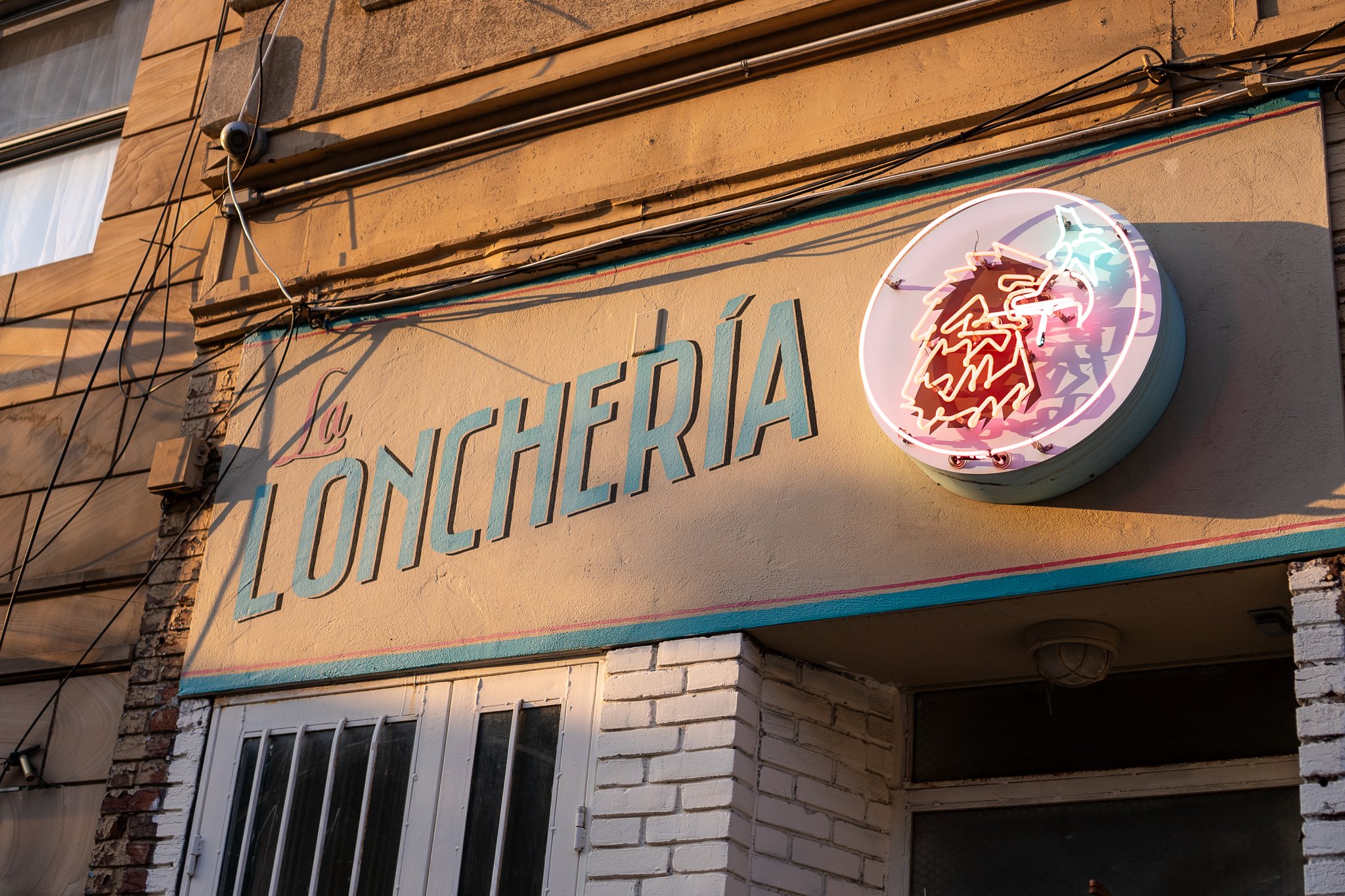
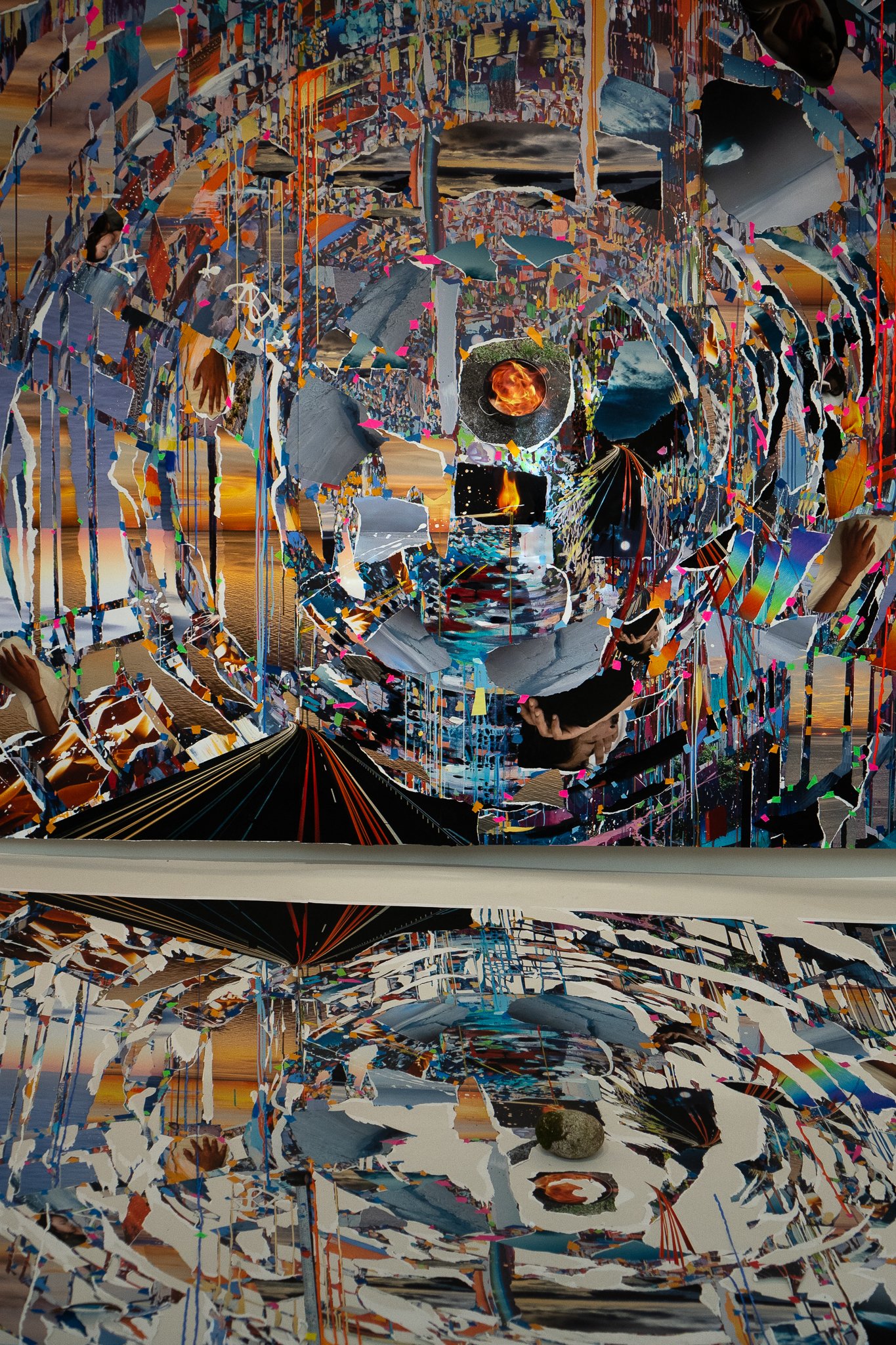
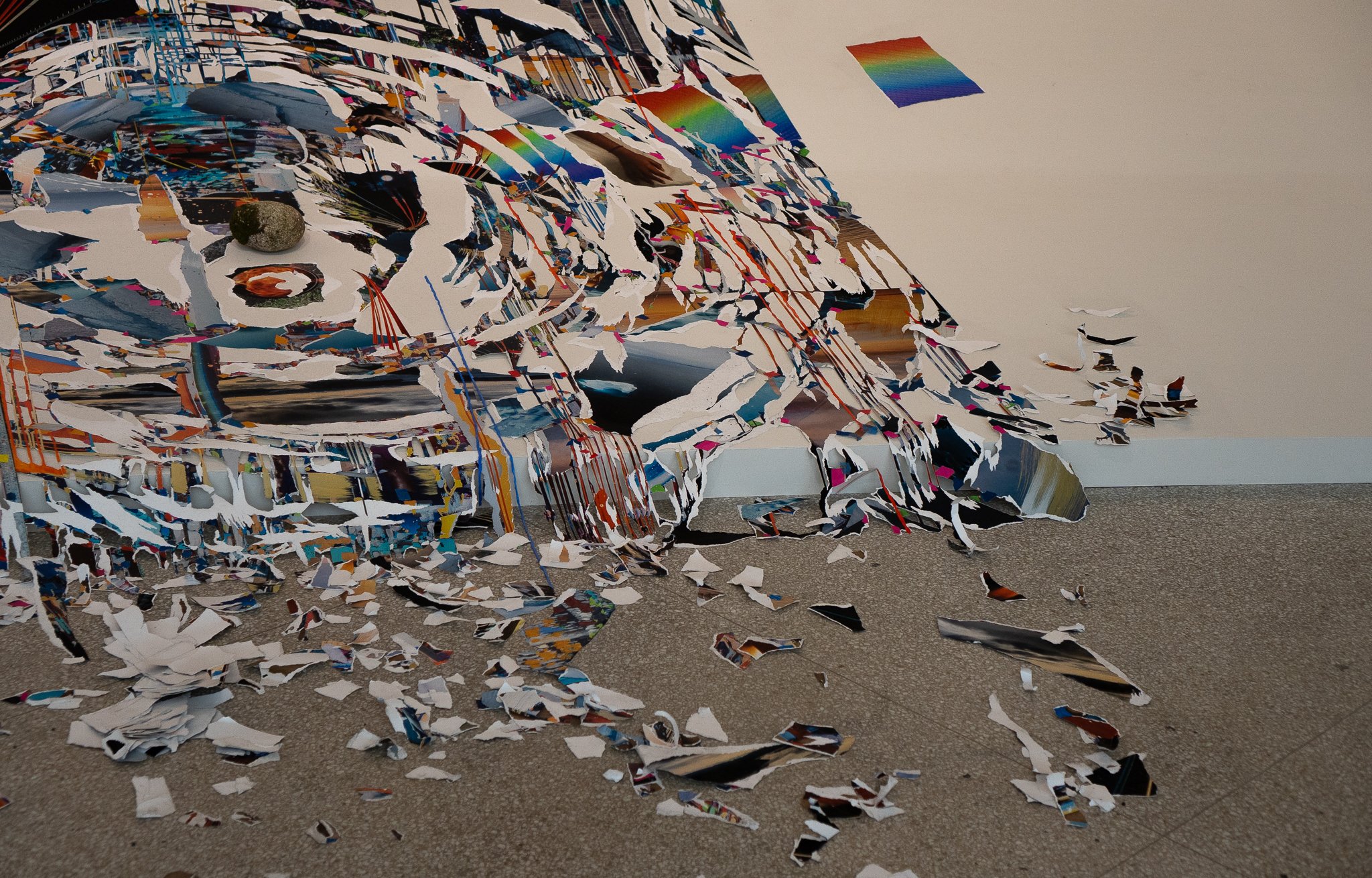
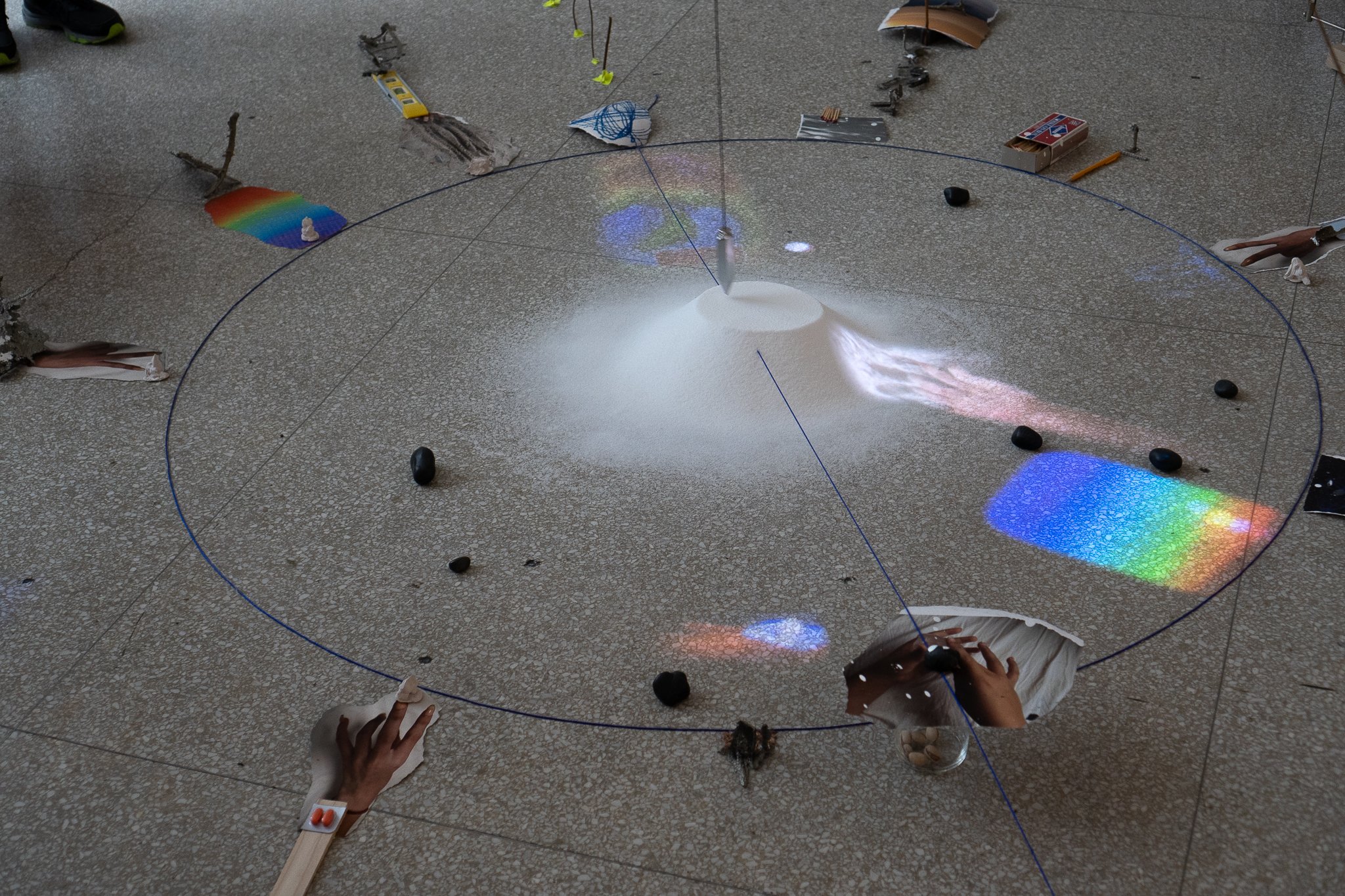
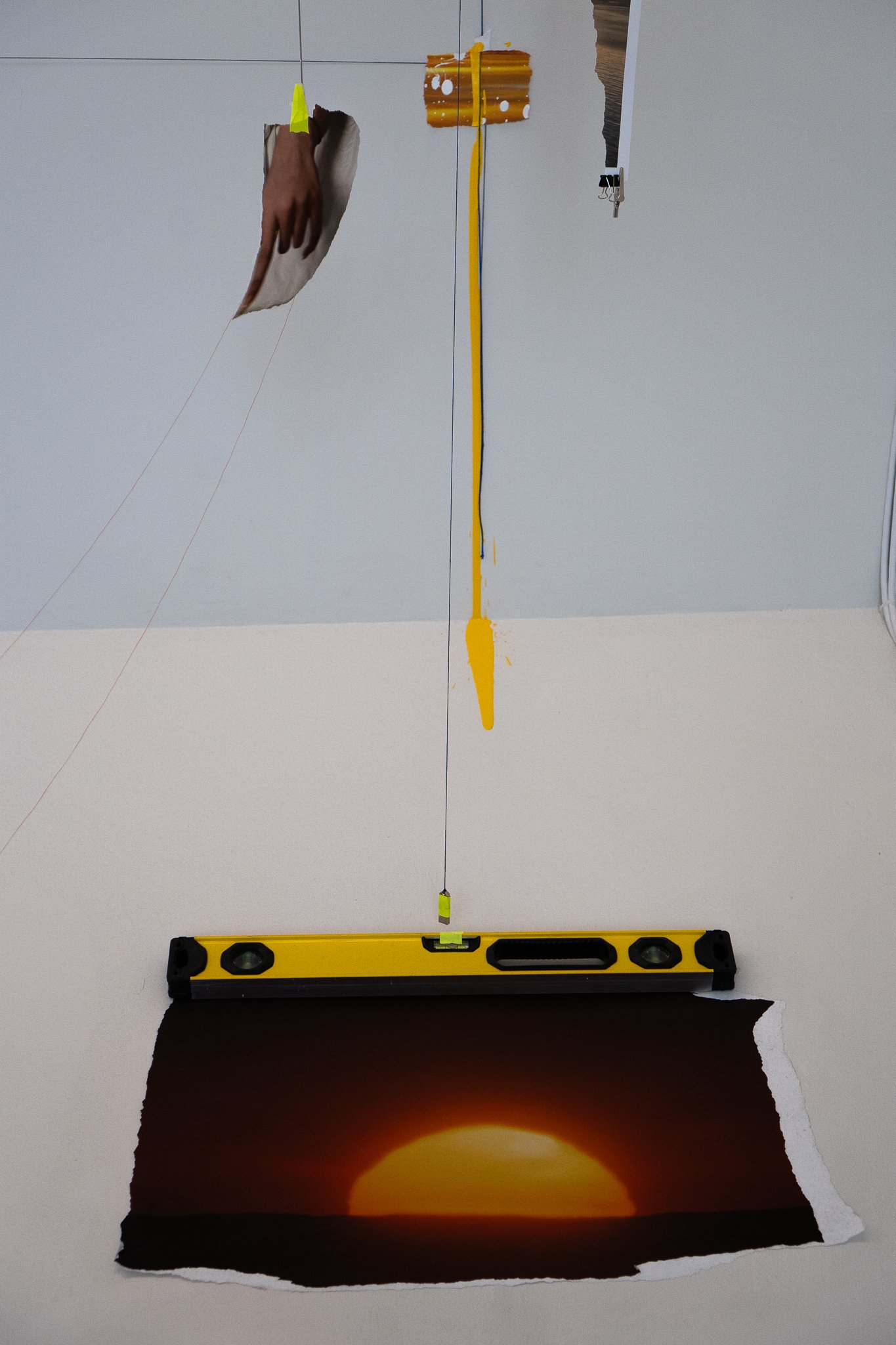


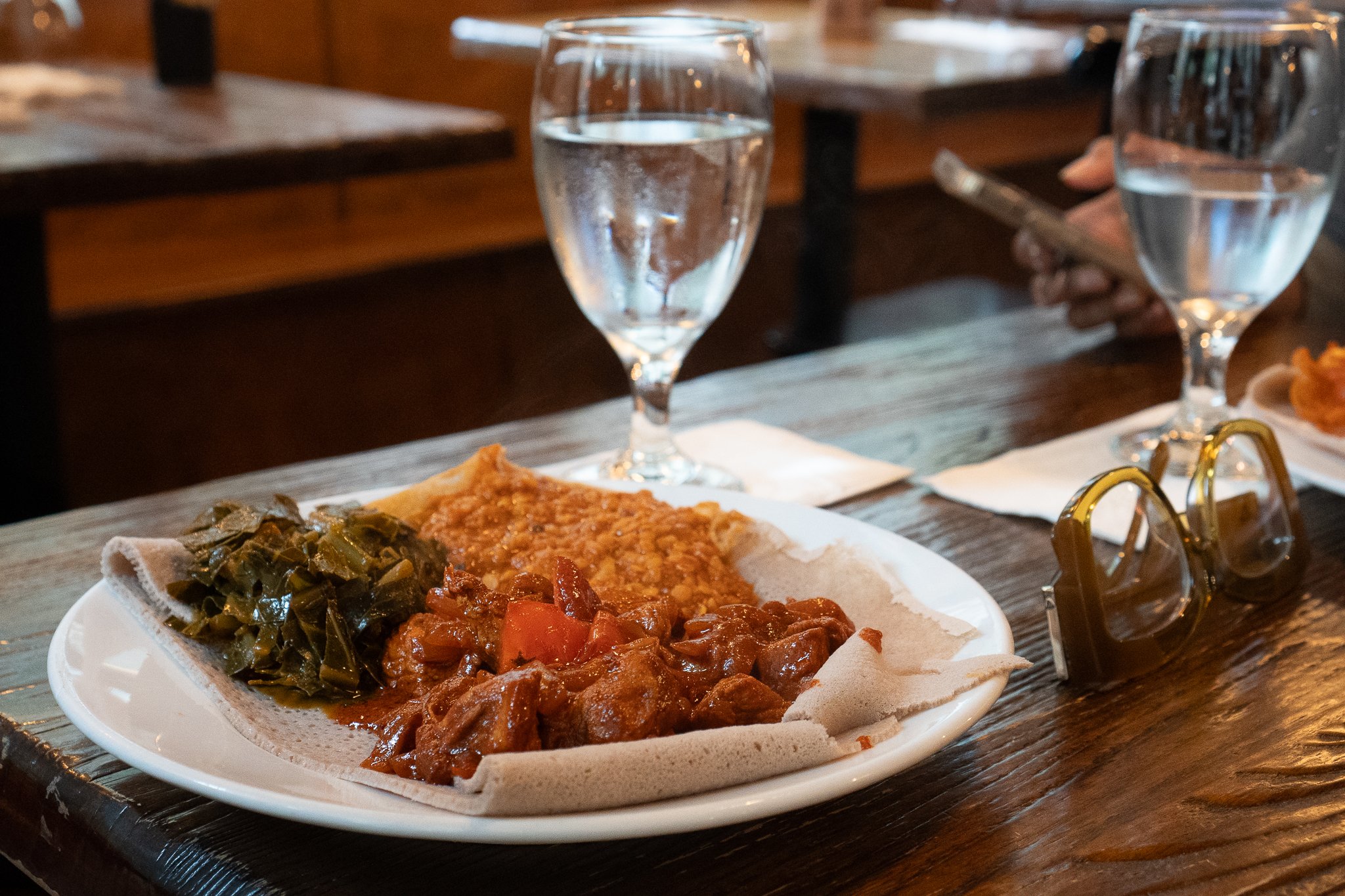
Maria aguirre
In Brooklyn, tucked away between the bustling streets, exists a classroom that defies convention. This classroom is not adorned with rows of desks or whiteboards, but rather, high-top tables and a great Spanish rock playlist. It was here at La Loncheria that I, accompanied by fellow intern Kendall Greene and Dr. Goffe, was able to experience the richness of experiential knowledge.
Meeting Oscar, the passionate owner of La Loncheria, felt like stepping into a beautiful world of history and gastronomy. As the daughter of parents both well versed in Mexican cuisine (my mom makes the best Mexican food), I admit I can be hard to impress. However, La Loncheria exceeded my expectations with the delicious homey and hearty dishes available. Oscar's conversations delved into the historical narratives behind the world of his eatery. The visit transformed into an immersive lesson on cultural heritage and culinary evolution.
On the topic of Mexican wine, he explained why it commanded a premium far beyond the walls of the eatery. Tracing back to the Spanish Colonization of Mexico, his mini history lesson extended beyond textbooks, encompassing the stories and insights of those who live and breathe their craft. La Loncheria in its unassuming elegance unfolded as a classroom that expanded our culinary and historical knowledge.
Week 5/July 3-9, 2023
Ariana White (Fordham): “It was eye opening seeing Dr. Goffe’s exhibition come to life as she utilized two separate spaces within ONX Studio to portray the stark contrast between living and dying corals - the exterior fountain lobby and the interior gallery space. When corals are healthy they are vibrant, as they lose the symbiotic algae necessary for nutrition they lose their coloring. Black and white footage of corals and static visuals allowed the audience to compare the lively and bubbling sounds within lobby with the stressed and vulnerable visuals featured within the gallery.”
Ariana White
It was eye-opening seeing Dr. Goffe’s exhibition come to life as she utilized two separate spaces within ONX Studio to portray the stark contrast between living and dying corals - the exterior fountain lobby and the interior gallery space. When corals are healthy they are vibrant and as they lose the symbiotic algae necessary for their nutrition, they lose their coloring. Black and white footage of corals and static visuals allowed the audience to compare the lively and bubbling sounds within the lobby with the stressed and vulnerable visuals featured within the gallery.
Following the official opening of the NEW INC Extended Realities” group exhibition, every femme artist, who exhibited, was invited to give an artist walk-through and share artistic inspirations for their projects. Each artist showcased their skills in an extended and artificial reality, as a tool to present a core message or provoke specific dialogue. Some exhibits were dependent on sound and music including Dr. Goffe’s, who included a Theremin and mini DJ setup. Antariksha Studio utilized South Asian music and digitized historical artifacts in her online worlds and games resulting in a liberatory and immersive experience. Another interactive display by, New Art City, allowed extended reality to provide an exhibition space within an exhibition, permitting the audience to interact with various art exhibitions in one space. Learning from the work of archivists, artists, researchers, and technology wizards lent me insight into the bustling art exhibition world and allowed me to observe the various processes necessary for an art installation.
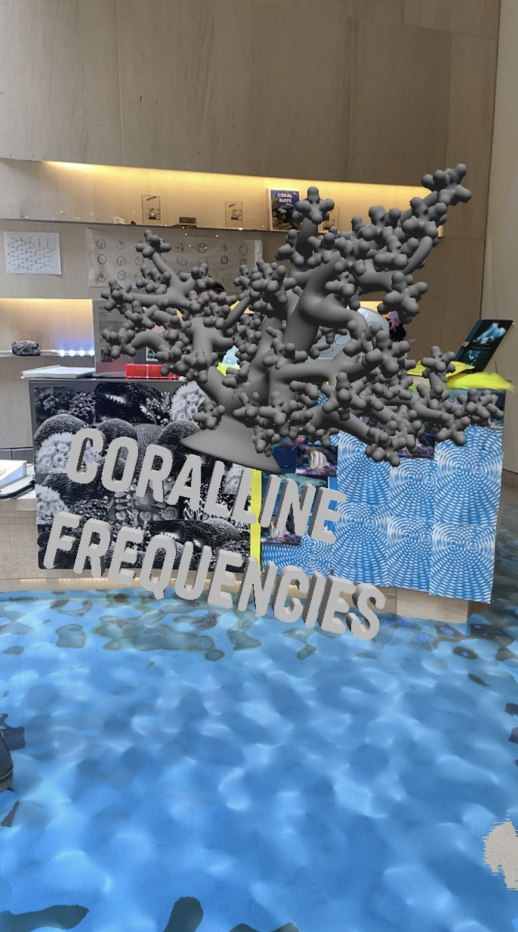
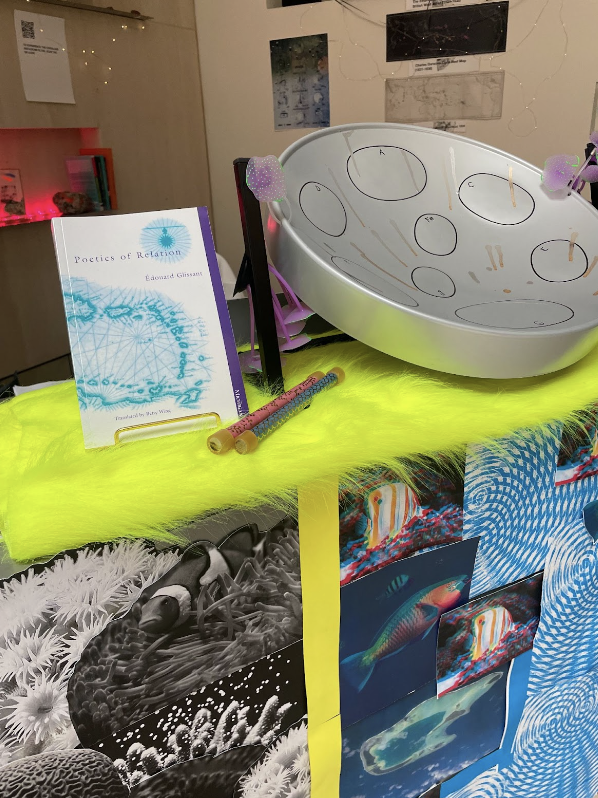
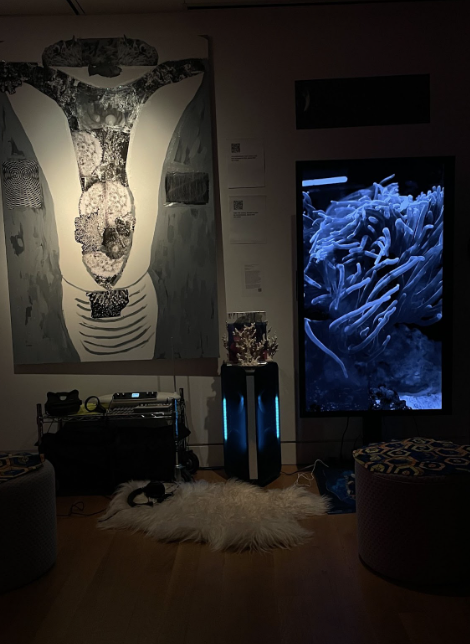
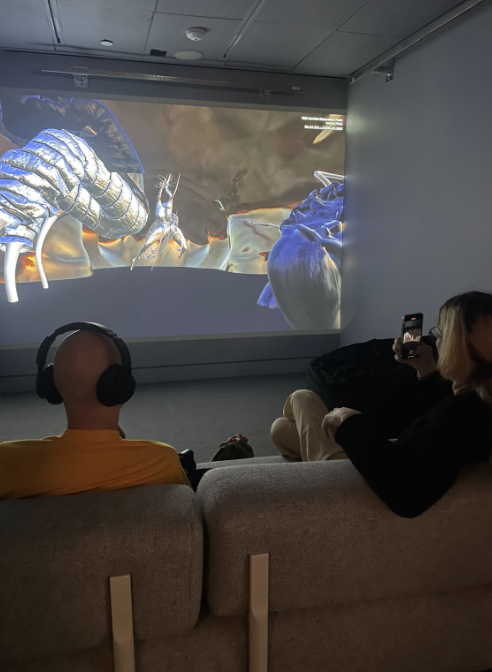
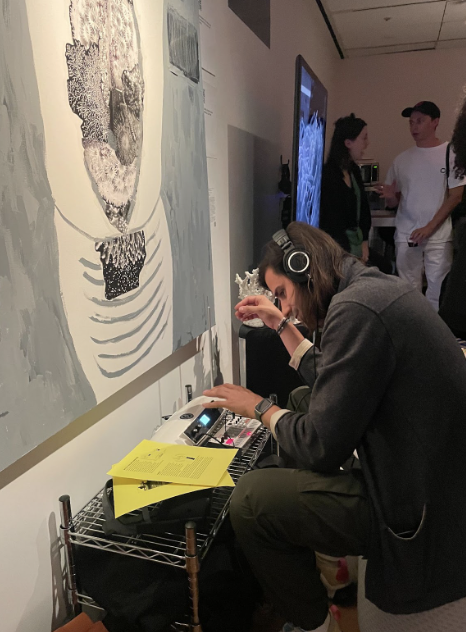
Kendall Greene
During Week Five, I continued editing my draft of Jenny Lau and researched drone regulations. Unfortunately, I fell sick for the rest of the week and had difficulty concentrating. I am grateful that I was able to work remotely this week so that I could work at my own pace and visit the doctor.
(Continued on Week 6)
Maria Aguirre
As the sun dipped into the shimmering skyscrapers of the city beyond the Hudson, I found myself grateful to have such a view. This picturesque science unfolded in a charming park I stumbled upon during my initial days in New York City. Settling into the rhythm of life, this moment was a breath of fresh air (literally), far away from any looming skyscrapers, and with trees all around.
With just a few days of work due to the holiday weekend, I delved into social media recommendations as well as other smaller tasks. These initial responsibilities allowed me to acquaint myself with the organization’s digital presence while also leaving ample room to explore the city’s offerings. As fate would have it, my curiosity led me to the RiverBank State Park. Another evening, I stumbled upon a salsa concert. It was a lively fusion of diverse rhythms and sounds, mirroring the city’s own eclectic composition. It was a testament to how culture weaves a tapestry that binds people together. Reflecting on these initial days, I realize that though the skyscrapers define the skyline and fame of the city, it's the melting pot of people that defines the true essence of New York City.
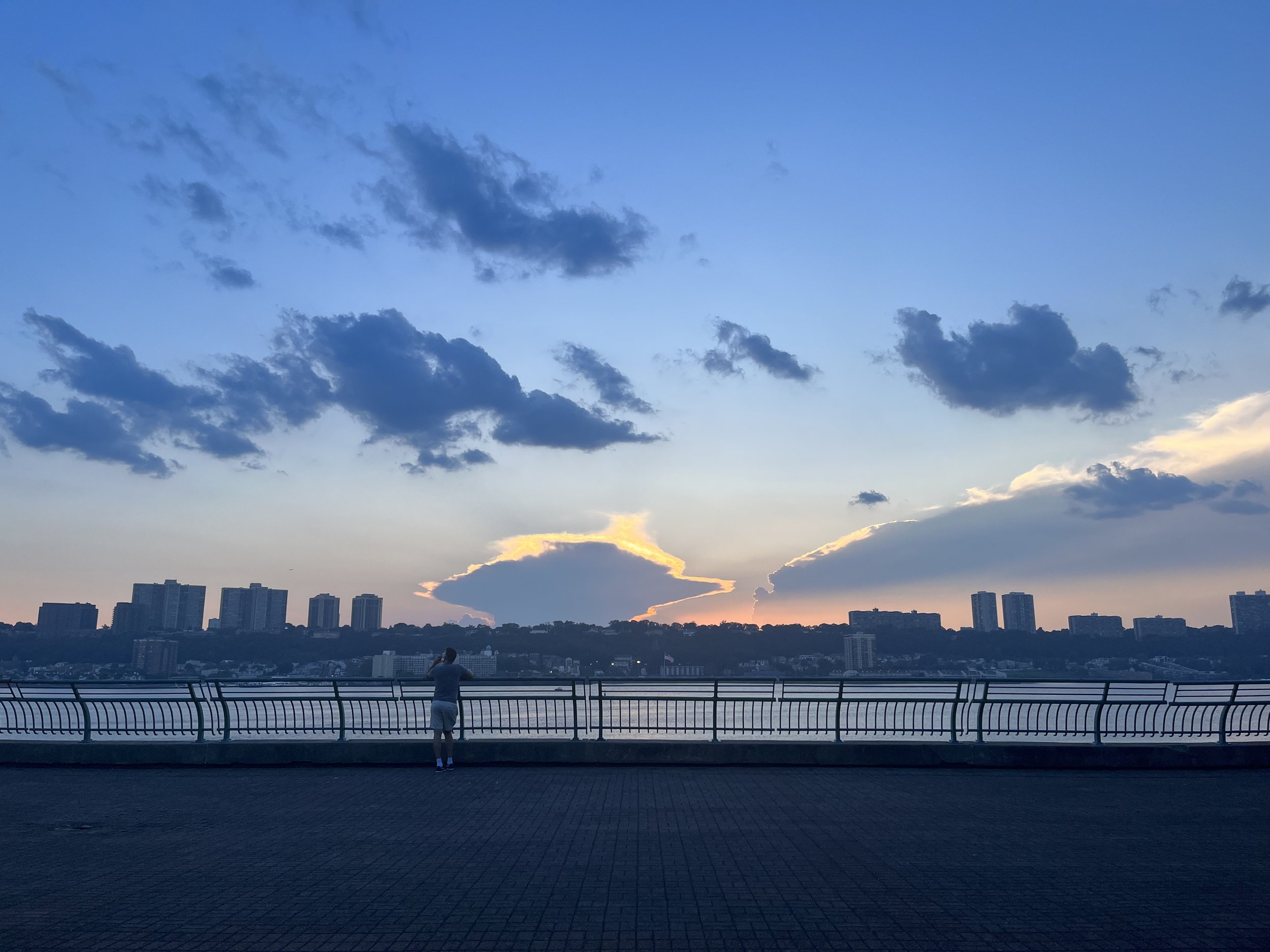
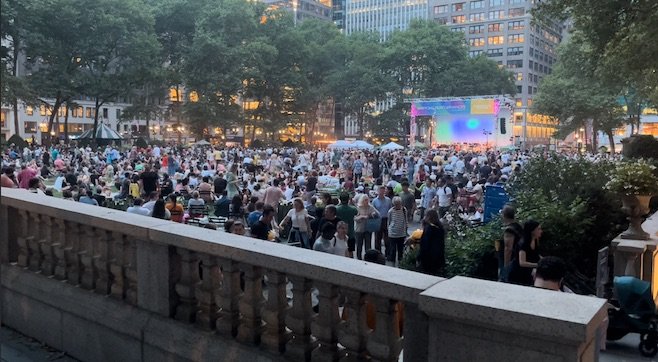
Week 4/June 26-July 2, 2023
Kendall Greene (Amherst): “On Monday, we had to deinstall the exhibition, and I felt forlorn seeing the space empty again. The lobby space was filled with so much love, care, and life through the sounds, colors, and textures of the installation’s various elements. I am excited to see the next iteration of the project a year from now and so grateful that I was able to be a part of this version. I learned how to adapt and troubleshoot with sonic technology that shapes the space as well as improvise and help create a pleasurable atmosphere. After de-installation, I visited the MoMA for the first time and photographed all of the images that caught my eye. I was specifically focusing on African, Asian, and Indigenous storytelling. The rest of the week was completely remote which was definitely an adjustment. I miss being able to travel together and meet different people around the city, but I was able to learn about the importance of planning out my own excursions.”
Kendall Greene
On Monday, we had to deinstall the exhibition, and I felt forlorn seeing the space empty again. The lobby space was filled with so much love, care, and life through the sounds, colors, and textures of the installation’s various elements. I am excited to see the next iteration of the project a year from now and so grateful that I was able to be a part of this version. I learned how to adapt and troubleshoot with sonic technology that shapes the space as well as improvise and help create a pleasurable atmosphere. After de-installation, I visited the MoMA for the first time and photographed all of the images that caught my eye. I was specifically focusing on African, Asian, and Indigenous storytelling. The rest of the week was completely remote which was definitely an adjustment. I miss being able to travel together and meet different people around the city, but I was able to learn about the importance of planning out my own excursions.
Spending most of my time in my apartment, I was able to go deeper with the work I was doing. I completed my first draft of a profile of Jenny Lau, the present chef-in-residence, and learned about the many hats she allows herself to wear. Her interview inspired me to remember the routines that ground me and dive back into cooking. As I re-listened to her interview conducted by sous-chef, Aree Worawongwasu, I was inspired to experiment with vegan recipes. I tried the Black-Eyed Peas and Okra Fritters deep-fried for the first time. This definitely was not a beginner recipe, but I had made too much batter, so I had the opportunity to improve over the following days. I love black-eyed peas and haven’t cooked them without my family before, which made this a great opportunity to connect to ancestral traditions with a curious twist.
By the end of the week, I also completed my first draft of dates for an Afro-Asia calendar. The intention of the calendar is to orient Afro-Asian intimacies, histories, and celebrations within time. In the interview with Jenny Lau, she and Aree contemplated the concept of Afro-Asia that is unrestricted to the various continents as it is found in the relationships between people of the diaspora. The calendar expands on this idea that Afro-Asia is not confined to physical space but can be embodied through time and reminders to celebrate and connect. My remote work this week offered me the space to be introspective and re-orient into the work I am doing this summer, and I am looking forward to being in physical space with Dr. Goffe, and Ariana, and meeting Maria in person for the first time.
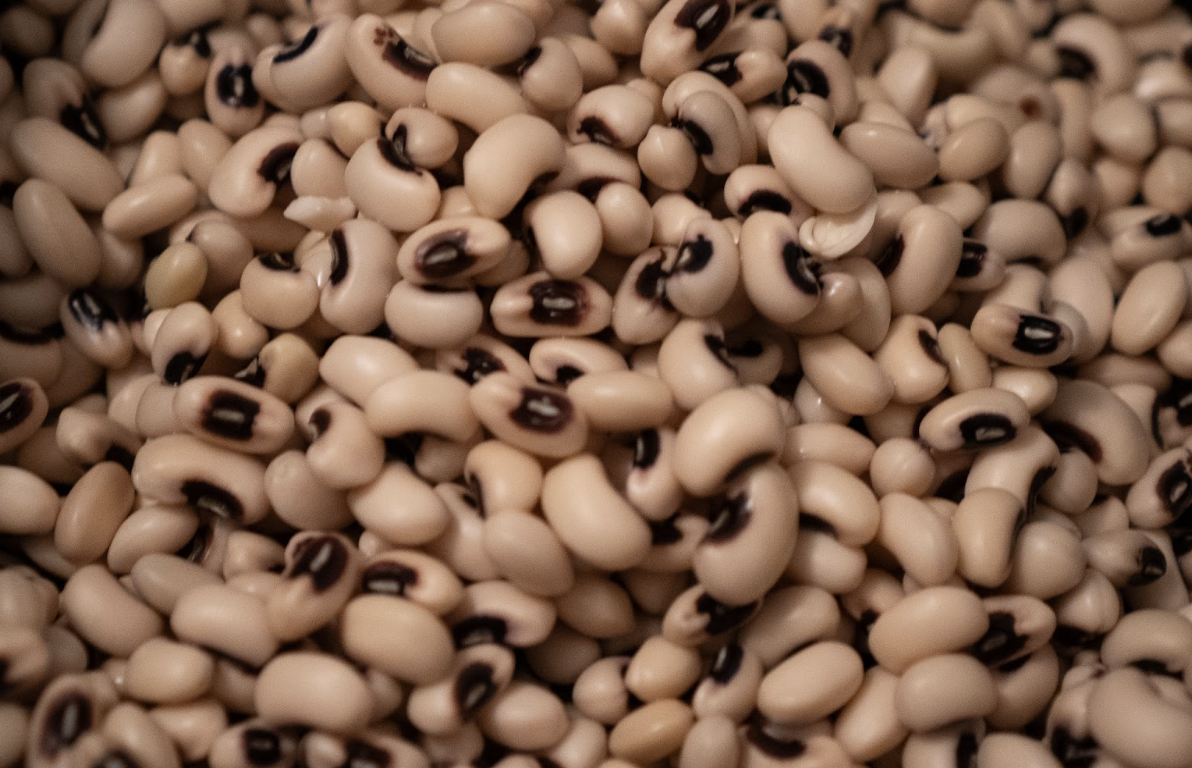
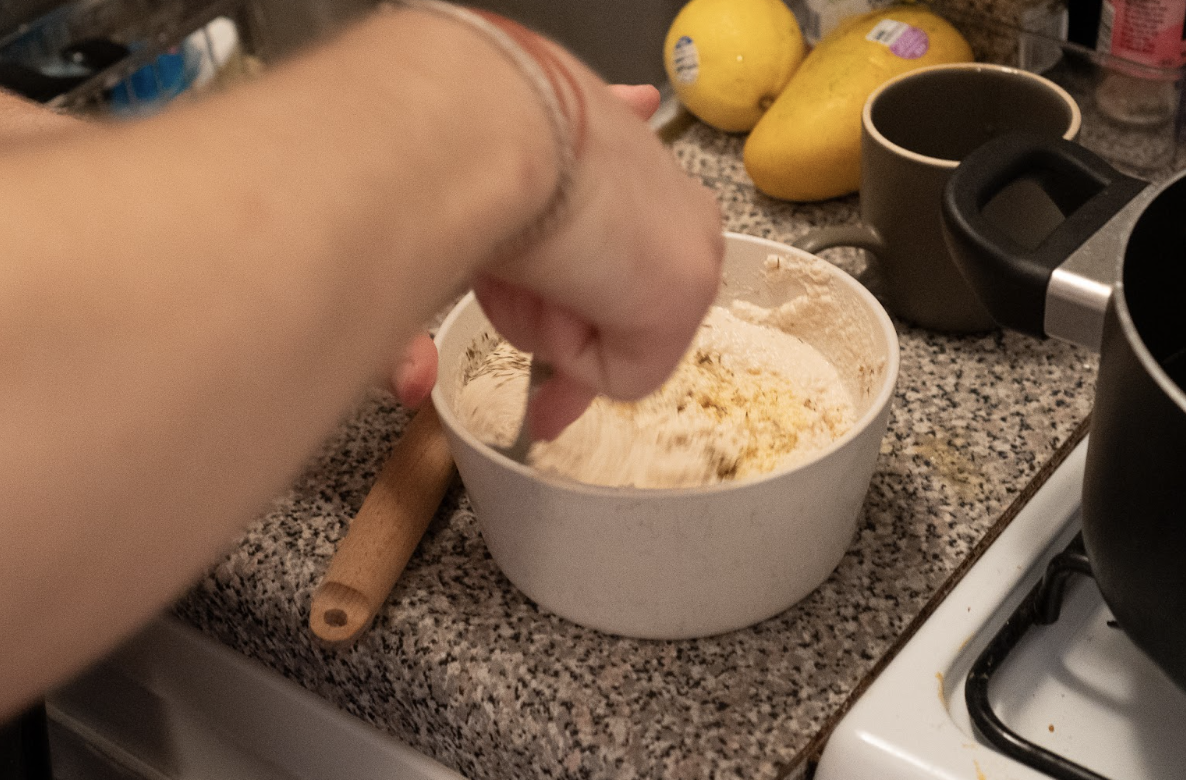
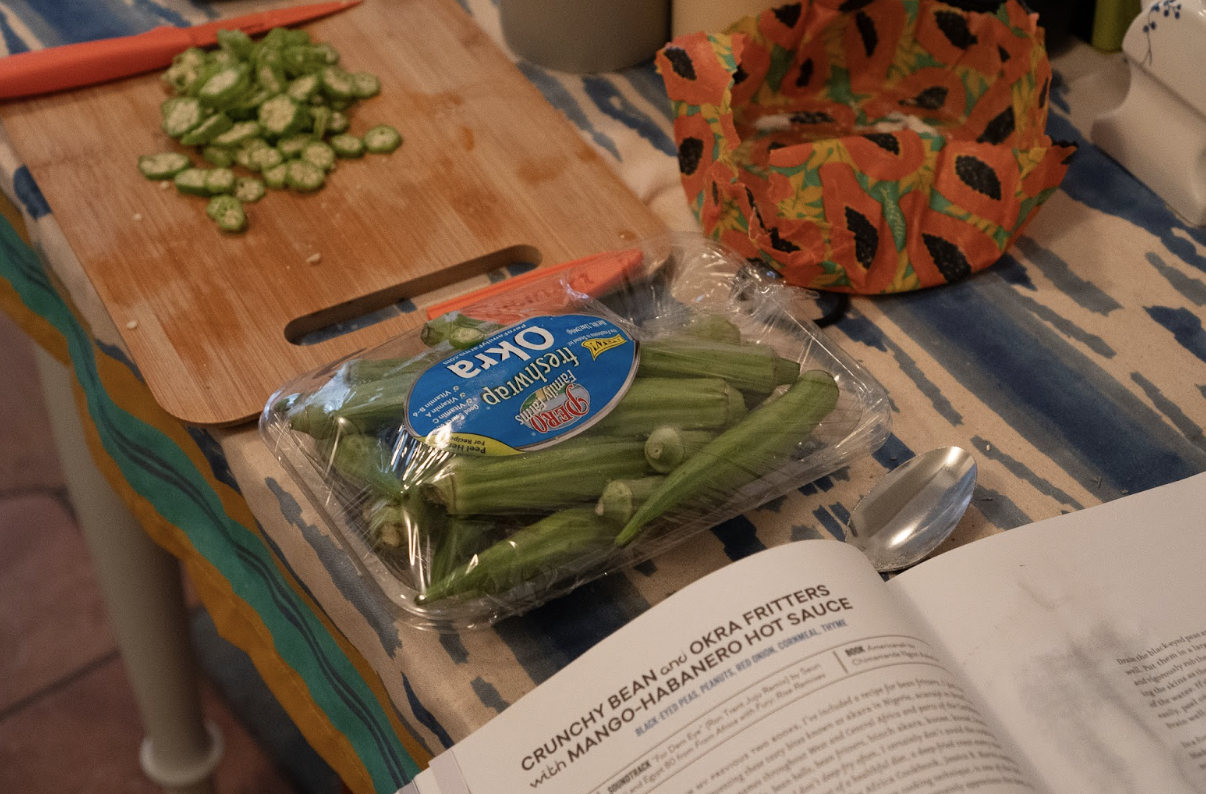
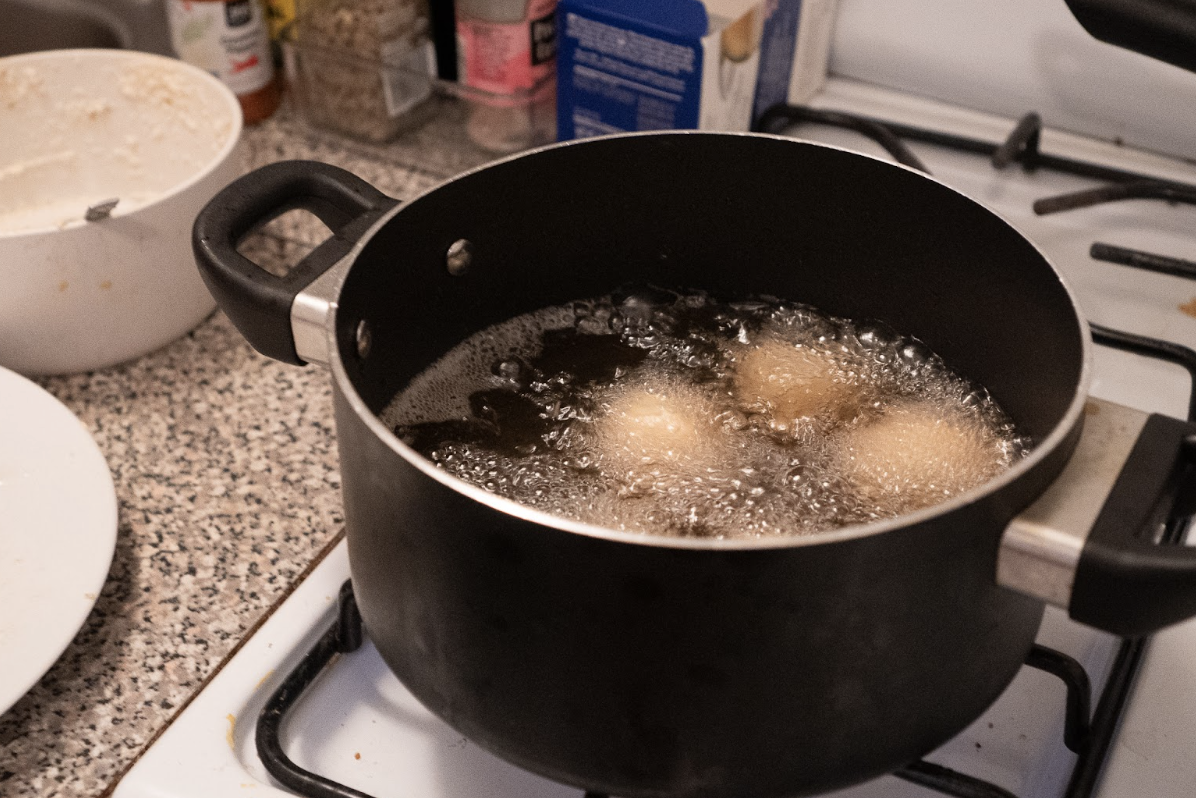


maria aguirre
This week at the New Museum, I attended a conversation between artist Mire Lee and exhibition co-curator Gary Carrion-Murayari to learn more about the new installation “Black Sun”. As I entered the quickly filling room, I tried my best to get a good seat, soon enough the doors closed and Mire Lee began talking about her work.
During the length of the conversation the thing that most stuck out to me was a recurring theme of the disgusting. At the time of the conversation I had never seen the exhibition, however soon enough I understood what disgusting could look and feel like. The scale of the disgusting work was impressive. Size for Mire Lee was part of the game. Playing with uncontainable energy. Pictures of the installation in the background of the conversation served as an interesting preview to what I would later see. In person it was crazy to say the least. The scale of the work was impressive and I could feel the uncontainable energy that was talked about. The level of work that this required was revealed during the conversion, but something that I found interesting was her enjoyment of labor. Part of her inspiration behind working with sculpture was the act of impressing. Labor intensive work that cannot fail to impress. To that, I have to say she did a remarkable job.
The disgusting element played in all the details. The size, labor, movement, and material. Using wet clay in her work meant that for the installation to be properly maintained throughout the exhibition it had to remain wet. The room built within the room did just that. As I entered through the lab like curtains, I felt the moist and warm air hit me. The smell of clay permeated the air. This installation played on all the senses in a cohesive experience. The humidity that hit my skin as I moved the plastic drapes, the smell of wet clay, the taste of the air forcing its way into my system, the sound of machines whirring, and the incredible sight of the installation itself. It was horrible. (I don’t mean that in a negatively critical way.)
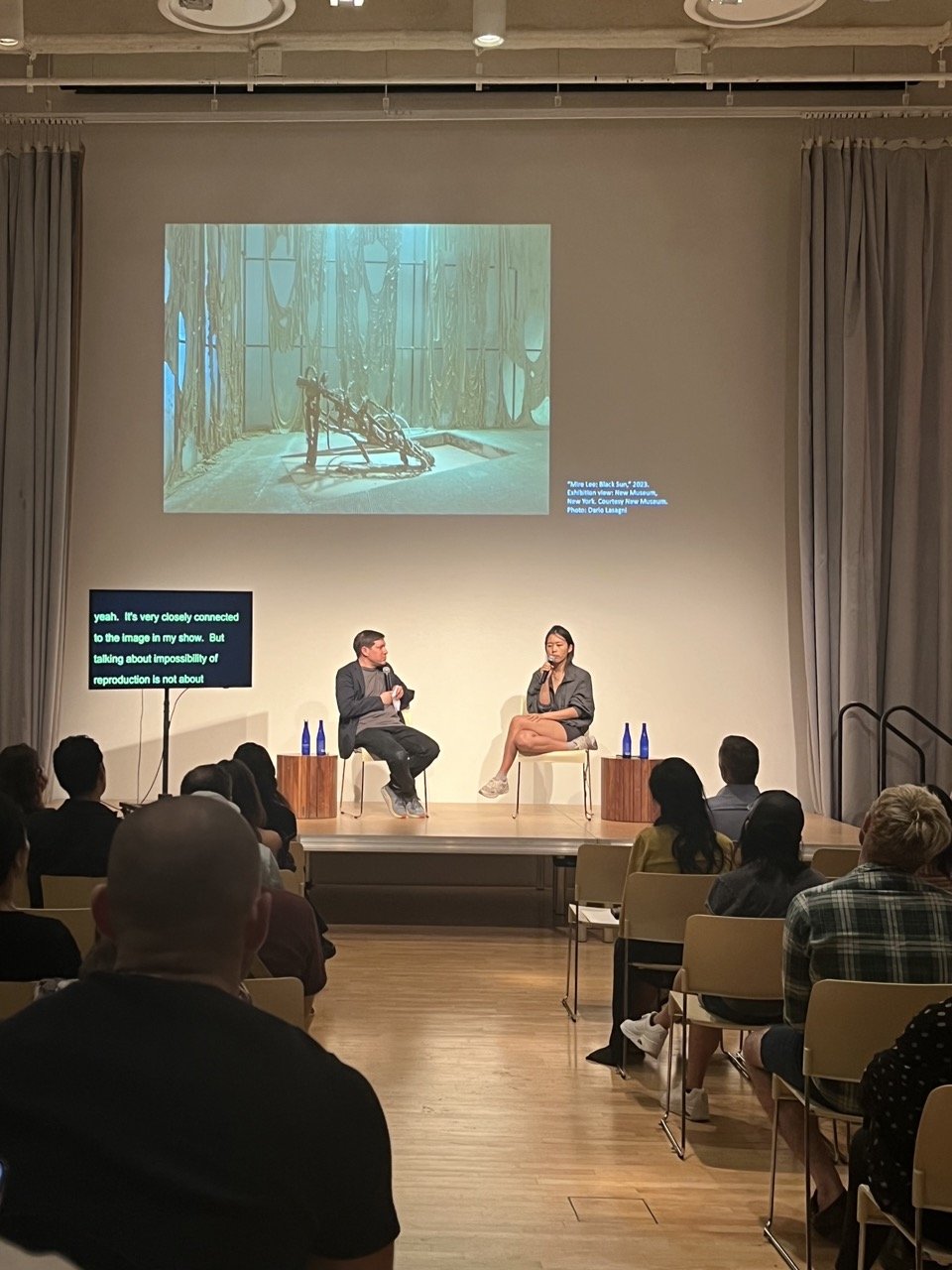
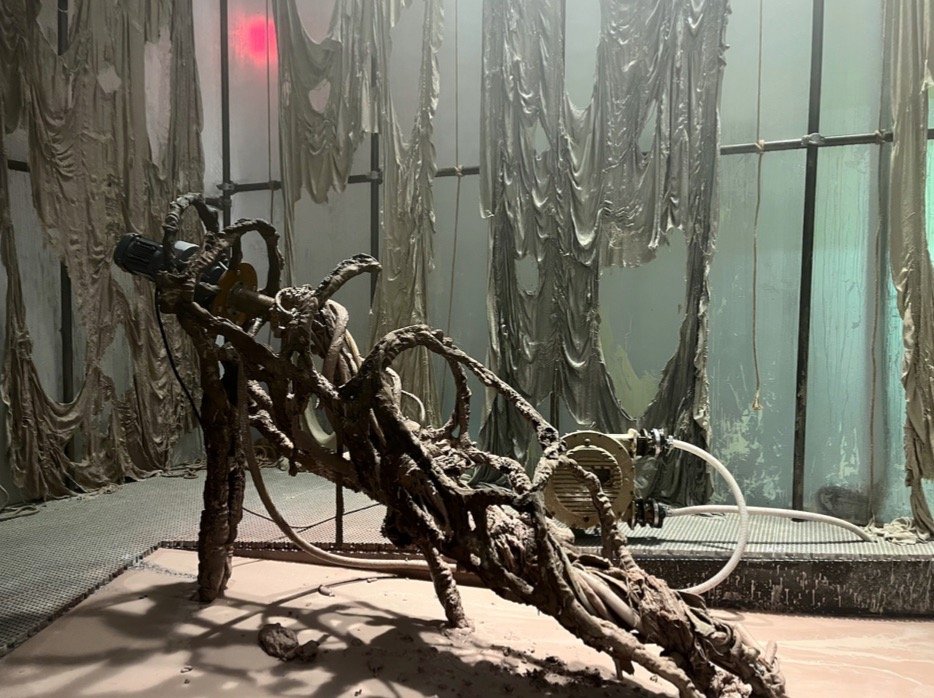
Ariana White
It was special to be a part of Dr. Goffe's 2023 demo exhibition “Coralline Frequencies” at NEW INC, the incubator of the New Museum. Nestled beneath the ground floor of the Olympic Tower in midtown, is a technology and design studio focused on XR and AR engagement as artistic practice. As part of the New Inc. “Extended Realities Track,” Dr. Goffe incorporated sound, visuals, literature, and music to create a multidimensional space that educates and advocates for attention on coral reef species as members of the Caribbean diaspora.
Fellow intern Kendall Greene and I visited Dr. Goffe’s home in NYC where she spent most of her time in preparation for this exhibition. We were allowed insight into her creatives and given specific installation tasks and responsibilities for the three days Dr. Goffe used to organize each aspect of her exhibition. Her dining room table held black and white images of coral reefs alongside anaglyphs of corals, full of life and color. We packed seemingly distinct items and transported them to the Onassis Gallery where they would be transformed into parts of a larger educative message about the climate crisis, Caribbean ecologies, and the lasting effects of transatlantic racial injustice.
Through her research, Dr. Goffe views coral species as ancestors and witnesses to generations of life on earth specifically, the injustice done towards Black and brown bodies. Corals are strong communal living animals cemented to the earth’s seafloor creating diverse ecosystems for fish, aquatic vegetation, and microscopic phytoplankton. They are ecosystem engineers changing the makeup of their environments to best suit their access to nutrition and oxygen. Coral species exist at the nexus of animal and plant life, as they utilize the sun for glucose synthesis yet require external food sources. As oceans warm, due to excess CO2 emissions around the world, corals lose the necessary algae they need to survive and which contributes to their coloring. We are left with bleached coral reefs and the decimation of prime environments for aquatic life.
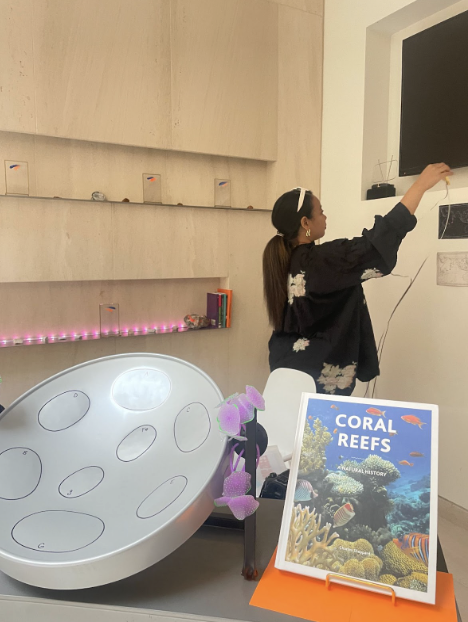
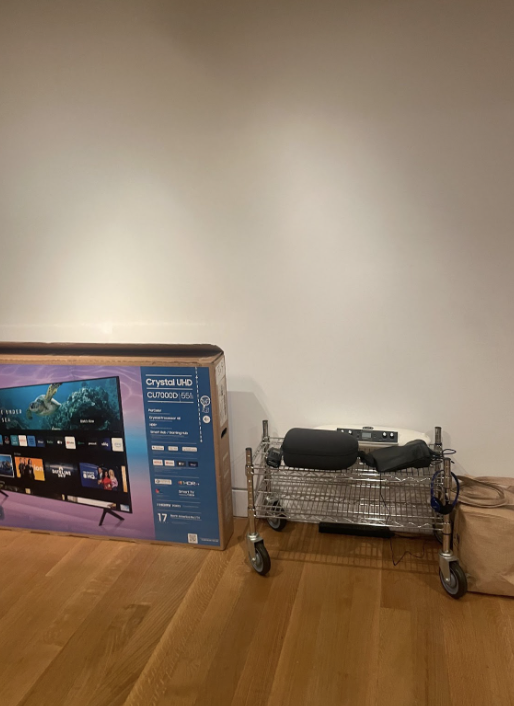
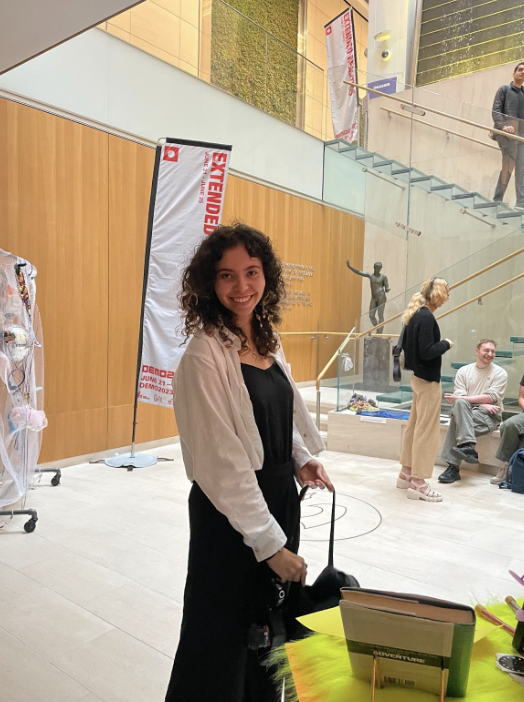
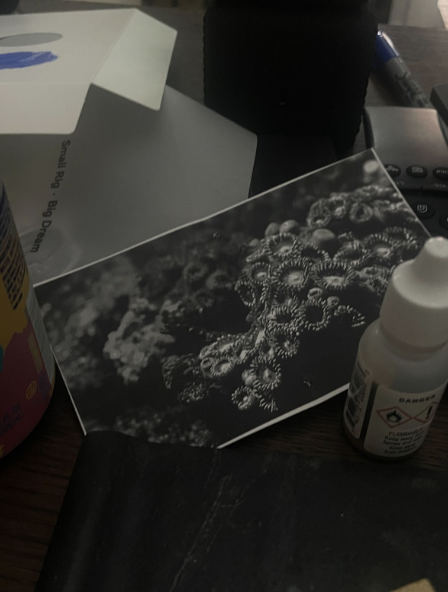
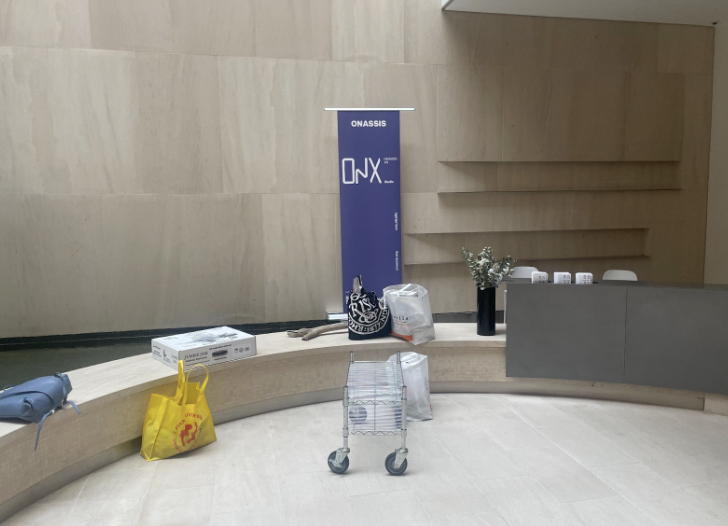
Week 3/June 19-25, 2023
Kendall Greene (Amherst College): We also were able to witness and experience the opening performances of the New Inc. exhibition at ONX. I was able to meet some of the other artists and enjoy their work live rather than the recordings alone. The following day there was a Ladies in Tech meetup, and each artist walked us through the process and ideologies of the projects that the women and femmes in the space had created.”
Kendall Greene
This week focused on preparation for Dr. Goffe’s “Coralline Frequencies” installation at ONX Studio. We spent most of our time on 5th Avenue, a part of the city I had never visited before. After troubleshooting the technology for the installation (speakers, VR headset, mp3 players, etc.), I had the opportunity to meet with and ask Dr. Keolu Fox questions about his work, path, and interests. The conversation was both energizing and inspiring, and I am grateful that I was able to learn so much from his rich experiences. He spoke about his time in Kenya and the renewable technological work that scientists and activists are doing there.
I was especially interested in how he spoke about DNA sequencing and genomes. He emphasized the importance of respecting and valuing the way that ethnic groups and peoples refer to themselves as well as their cosmologies. Western scientists often dismiss the notion of entities such as mountains and oceans being ancestors when they are missing out on a worldview that is more expansive than limiting genealogy to people. As people evolve alongside their geographies, their genomes alter as a result. This can be made evident because people outside of those regions are not innately equipped to survive in those conditions. Although all humans have DNA that is more similar the dissimilar, the slight differences can be significant based on the location and context.
We also were able to witness and experience the opening performances of the New Inc. exhibition at ONX. I was able to meet some of the other artists and enjoy their work live rather than the recordings alone. The following day there was a Ladies in Tech meetup, and each artist walked us through the process and ideologies of the projects that the women and femmes in the space had created. I enjoyed playing with a controller and exploring New Art City on a projected screen, learning how video games can connect people to their ancestry, witnessing the relationship between virtual reality and the different spiritual aspects of ourselves, and understanding how the body can translate to a digital projection in live time. The week was inspiring a left me curious about the intersections between science, creativity, and genetics.
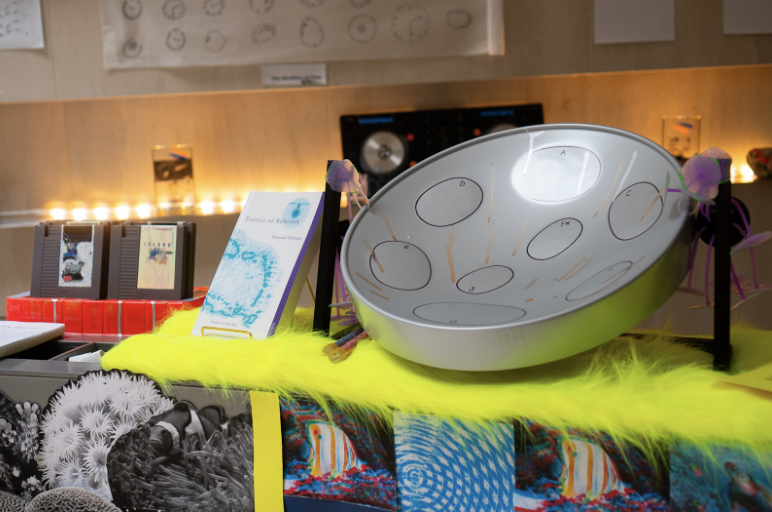
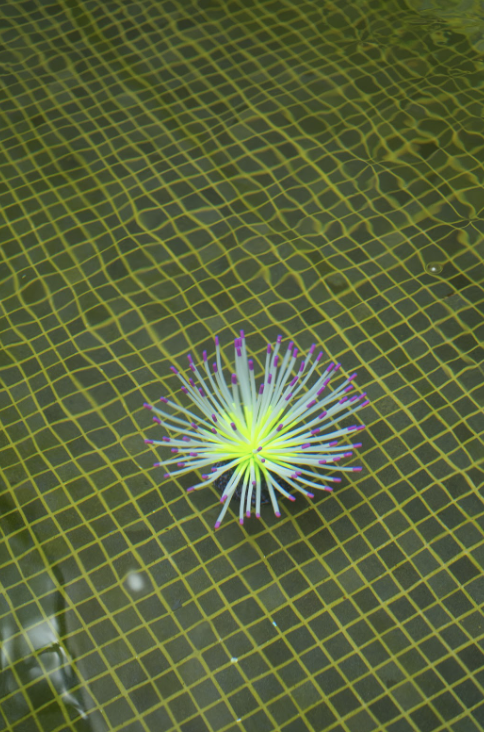
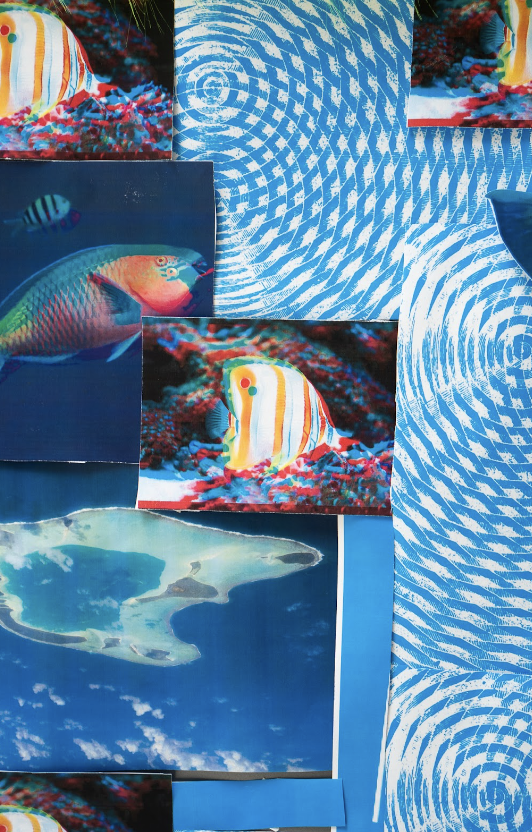
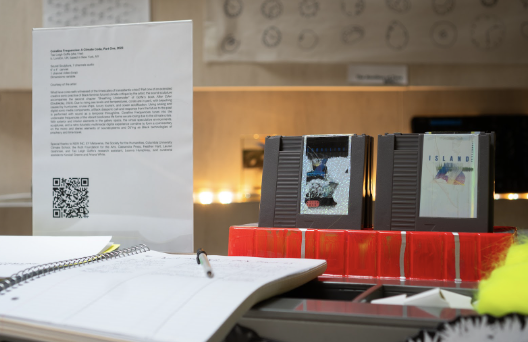
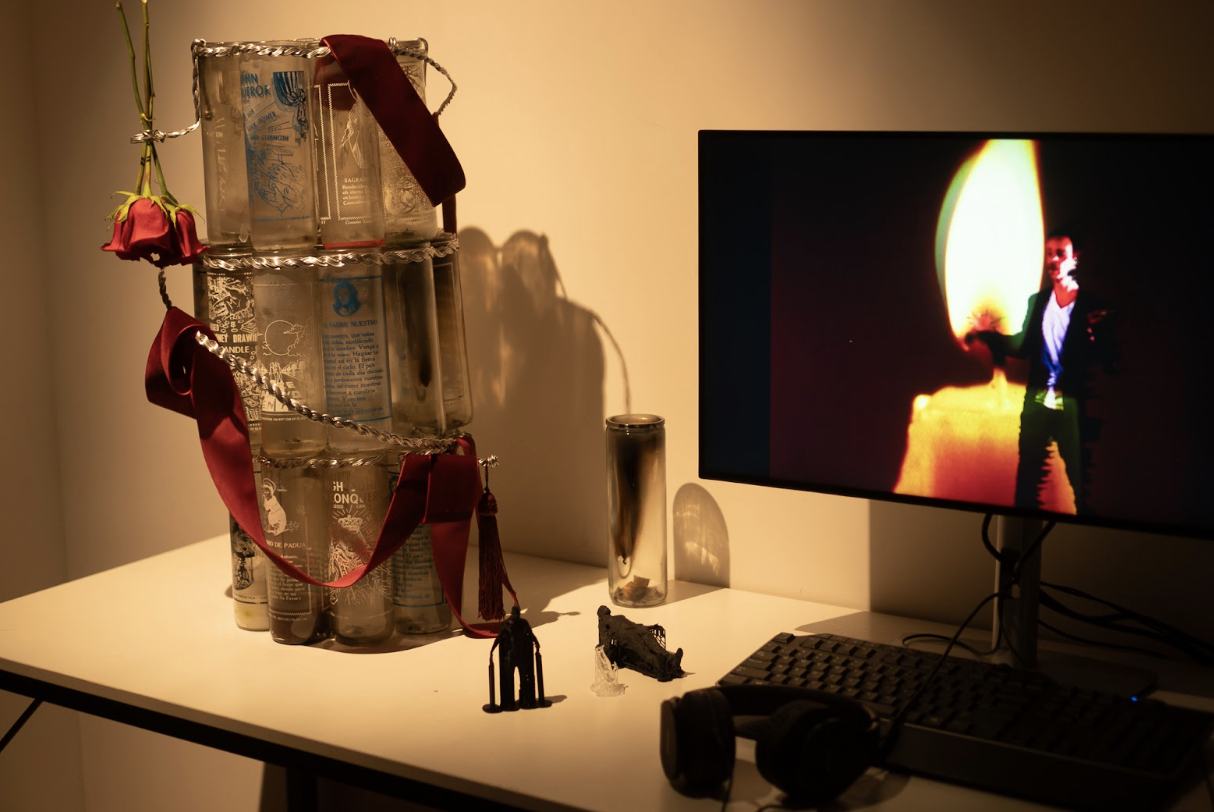
Ariana White
I acquired a comfortable pacing and rhythm this week, as fellow intern Kendall Greene and I were given an organized list of various research and exhibition tasks in preparation for Dr. Goffe/s exhibition “Coralline Frequencies: A Climate Coda Pt. 1” next week. I provided research on the plethora of coral reef species on Earth as well as their sheer decline in population size due to global warming and human activity. The list of species names is extensive and each genus differentiates by size, shape, and color patterns representative of their functions and adaptations to their environments.
We were assigned our first profiles, and I dove into research about Zainab Floyd, founder of Caribbean Archive, an online historical art resource intended to share aspects of the Black Caribbean femme diaspora. On the archive, I observed images collected from Floyd’s grandfather’s photo album where he kept images of Floyd’s family in Haiti. As a Trinidadian woman, it was liberating exploring this archive and witnessing a space designated for Caribbean femme experiences. Floyd’s work provoked great interview questions that provided information for the foundation of my profile.
In the spirit of social media archival spaces, I started running the Digital Junkanoo Twitter page @DigitalJunkanoo, which has forced me to grow comfortable with the convoluted aspects of Twitter. Once you search through the random assortment of colors, words, and numbers, I recognized how much I was learning each day by engaging with Caribbean artists, scholars, academic institutions, and nonprofit organizations. Whether it be a new article published about Caribean agriculture or an event occurring for feminist rallying in NYC, I am given the opportunity to engage with intersectional topics surrounding the Caribbean diaspora and feel a sense of community.
maria Aguirre
Through the computer screen, a unique energy unfolded as technology, architecture, art, and global connectivity met. The recent AMA (Ask Me Anything) interview session featuring coder-in-residence Celeste Layne showcased the Dark Laboratory’s commitment to fostering cross-continental collaboration, as well as connection. Zooming from Istanbul, I had the amazing opportunity to participate in this enriching discourse despite the over 5000-mile physical separation.
The virtual dialogue with Celeste Layne went into the intricate intersections of architecture and technology, igniting insights into the interdisciplinary world that exists. As a rising Junior, my future in the real world has felt daunting at times. With so many options, it can be overwhelming to choose just one thing. It was refreshing to hear about the “real world” from someone who lives in it.
Despite the miles between us, the orientation period proved to be an exciting initiation into the Dark Laboratory’s ethos and aspirations. Through virtual interactions, I explored the organization’s mission, imbibing its values, and understanding its drive. This first week experience showcased the power of technology in transcending spatial constraints, enabling me to be a part of this organization even from afar. I am grateful for the digital avenues that allow experiences like this to be possible, and can’t wait for what is to come!

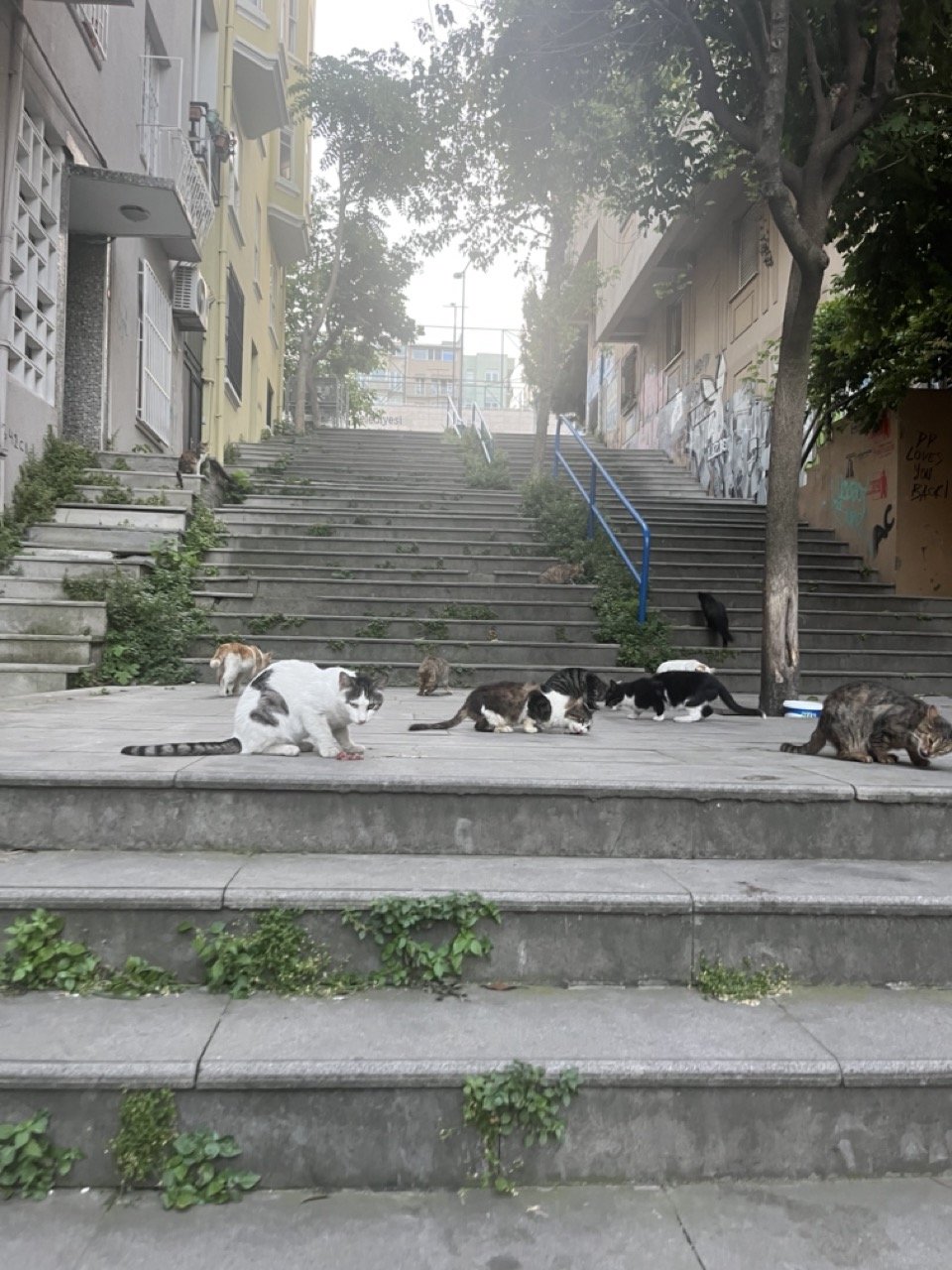
Week 2/June 12-18, 2023
Kendall Greene (Amherst): While we were in the Upper East Side, we decided to visit the Metropolitan Museum of Art. I was shocked by the high ceilings and casual atmosphere even the building housed artworks that were hundreds of years old. Our intention during the visit was to visit Lauren Halsey’s sculpture installation on the rooftop. The roof was bustling with people enjoying themselves and conversing with friends over drinks. I weaved my way through the sculpture and noticed the homages to Black power, community, sensitivity, culture, and joy ingrained in the artwork. This felt like a perfect opening transition to summer.
Kendall Greene
Once again, we had another full week of new people, ideas, and visits to different locations around the city. I had the opportunity to visit Roosevelt Island for the first time and learn about the history of Cornell Tech which inhabits most of the island. We were attendees of the Cornell XR Access Symposium. We heard presentations on studies conducted to help people with low vision or blindness better experience VR headsets and learned about the difficulties that the form of the headsets poses to those with cochlear implants. However, we reflected on how we wished that they had incorporated more diverse perspectives from people with varied abilities without being limited to gender identity.
After Roosevelt Island, we journeyed via subway to the Upper East Side to visit the New York Society Library. The interior was ornate yet comfortable and homey. We were immediately met with warm welcomes by the women at the front desk. Following introductions, we had the opportunity to explore the building decorated with marble sculptures, chandeliers, and an elevator that stopped at every floor. The staff allowing us to work there this summer were deeply kind, and I am eager to discover my go-to reading nook. While we were in the Upper East Side, we decided to visit the Metropolitan Museum of Art. I was shocked by the high ceilings and casual atmosphere even the building housed artworks that were hundreds of years old. Our intention during the visit was to visit Lauren Halsey’s sculpture installation on the rooftop. The roof was bustling with people enjoying themselves and conversing with friends over drinks. I weaved my way through the sculpture and noticed the homages to Black power, community, sensitivity, culture, and joy ingrained in the artwork. This felt like a perfect opening transition to summer.
On Saturday, I completed a few more runs to Best Buy and the printing shop to pick up supplies for next week’s exhibition at ONX. We transported about half of the materials for DEMODAY down in two separate cars and began setting up the space when we arrived. I look forward to writing more about how the exhibition goes for next week’s entry! For now, I hope you have the opportunity to watch the recently edited Kitchen Marronage Episode with Truong and Dr. Goffe’s talk on Black Geologies.
Ariana White
Discovering Hidden Connections
I spent most of this week working remotely, just miles from the George Washington Bridge in Bergen County, NJ. The week was full of small moments that highlighted the shared and unique experiences acquired across our team's various cultures. For example, Dr. Goffe mentioned the Trinidadian lottery game called “Ple (Play) Whe”, similar to those common in the United States. But Dr. Goffe shared that these games are not simply chance games, but ones based on superstition, intuition, and Asian traditions that favor specific days of the week and compositions of numbers. Goffe brought up memories of my great uncle in Trinidad who archives the winning Ple Whe numbers every week. Though knowledgeable of this lottery game I new knew about its cultural and religious significance andadn was allowed that insight through insightful conversation.
We also spent some time engaging in an activity that allowed us a sneak peek into one another’s family histories. We were asked to create a digital photo archive of our families using Padlet, which included images of our elders alongside images of the physical environment. I shared pictures of a weekly market held in Chaguanas, Trinidad while Dr. Goffe and Kendall shared images of plant life and vegetation that contribute to their home cultures biodiversity.
I ended the week with a trip to the New York Society Library in the Upper East Side to explore our unique resource and the layers of archival spaces within the library. I was given a tour through the what was once a lavish town home in NYC, where living rooms were converted to silent reading rooms and second elevators navigated floors filled to the ceiling with stacks. The public reference/reading room located at the front entrance is open for public use and incudes a secret door hidden within the walls lending homage to the history of the building itself.
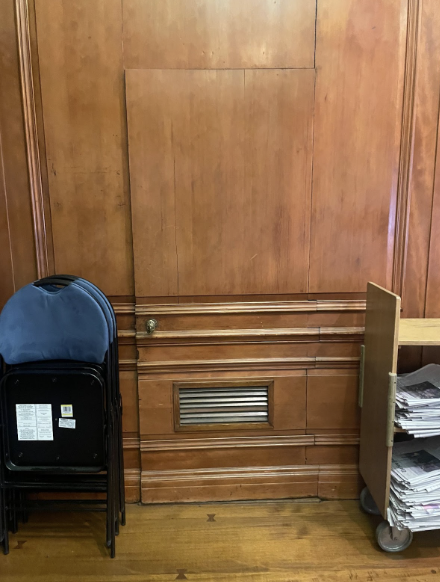
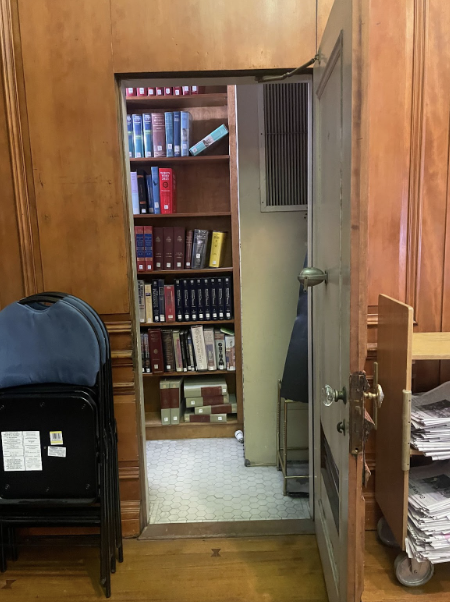
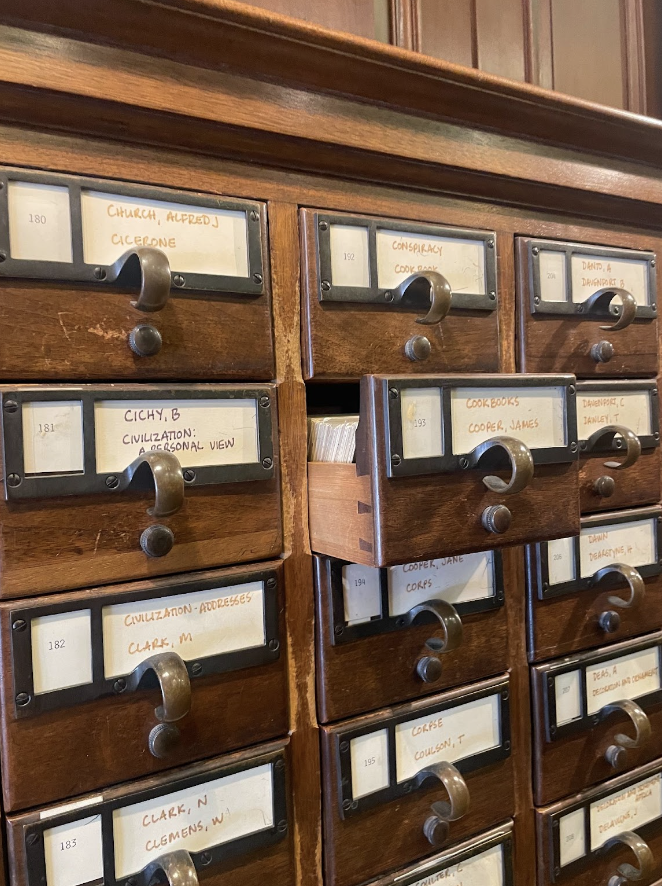
orientation Week/ june 6-11, 2023
Ariana White (Fordham): The Dark Laboratory Internship Orientation Week took us on a journey throughout New York City from Midtown, to the Lower East Side, to brownstones in Brooklyn Heights. Dr. Tao Leigh Goffe dedicated this week to orienting myself, and fellow intern Kendall Greene, to the inner workings of the Dark Laboratory and Afro-Asia Group, and conjuring goals and “dreams” for the summer’s initiatives.
Ariana white
The Culturally Expansive Nooks and Crannies of NYC
The Dark Laboratory Internship Orientation Week took us on a journey throughout New York City from Midtown, to the Lower East Side, to brownstones in Brooklyn Heights. Dr. Tao Leigh Goffe dedicated this week to orienting myself, and fellow intern Kendall Greene, to the inner workings of the Dark Laboratory and Afro-Asia Group, and conjuring goals and “dreams” for the summer’s initiatives. We were introduced to our workspaces throughout the city, including the stomping grounds of New Inc., and enthralled by the resources of The New York Society Library, the oldest cultural institution in NYC.
Following our visit to the Asia Art Archive, located in Brooklyn, NY, I was left with questions about how to continue increasing accessibility and allowing the public to grow comfortable in archival spaces, especially those of marginalized groups with a historically decentralized narrative. The Asia Art Archive is a global non-profit organization founded in Hong Kong, dedicated to preserving and sharing art across the Asian diaspora. We visited the first Asia Art Archive located in America, chaired by Jane DeBevoise, and facilitated by Furen Dai and Christina Ko. Asian sculptures, paintings, zines, books, and journals, held by Asia Art Archive, lined the walls of the once-old carriage house, filling the space with history and community through a diverse perspective on the vastness of Asian culture and multimodal art. Over 80% of the archive and exhibitions are accessible online, actively increasing accessibility, and gave me hope that traditional lines of thought within classic art spaces can and will be transcended and re-written.
We were introduced to the work of New Art City, an online art forum encouraging public engagement with multi-sensorial digital art, and allowed to visualize Dr. Goffe’s vision for her upcoming exhibition on June 21st with ONX studio at the Onassis Cultural Center Gallery. ONX Studio is an innovative space dedicated to creating immersive experiences with extended reality, technology, and artistic practice, and will be showcasing various artists as part of New. Inc’s creative festival “DEMO2023-Extended Realities”. Dr. Goffe’s exhibition space allows her creative freedom, as she works to portray the life, history, and global importance of coral reefs as indicators of the climate crisis and witnesses to transatlantic injustices.
Our week culminated with a visit to Nadia Huggins's exhibition, “Coral & Ash”, with the Hemispheric Institute, giving us interpersonal insight into Huggins’ relationship with the sea, the life and despair it holds, and the people that depend on it. As a Trinidadian native, raised and based in St. Vincent, Huggins provided a purposeful perspective on marine life through comparisons between coral reefs and the communities that engage reciprocally with the reef’s environment. Her work was vulnerable, as each image highlighted a new relationship she had or witnessed, whether it be between the sunlight and the waves or her perspective whilst capturing the movement of a school of fish underwater. We ended the day by crossing the street to Washington Square to capture some official portraits and fun selfies by the fountain.
Kendall Greene
We began the week with introductions to the workspace and the team working both remotely and in person. The first day was fully packed as Dr. Goffe and I visited a coral reef housed in Pratt Institute’s Writing Center. Randy, the caretaker of the reef, gave us a tour of the space, and a warm welcome to the campus. Both the coral and the fish were illuminated by the blue lights above the tank, and I watched Dr. Goffe feed an eel with two rows of teeth. We contemplated the stakes of aquariums and zoos. The fish and coral will never be able to experience life in the ocean but at least they are not subject to ocean acidification. How worth it is a life in captivity?
Later in the day we visited the Asia Art Archive in Brooklyn and attended a meeting for the Asianish collective. Each of the attendees was so friendly and welcoming, and we had the opportunity to learn about the origins of the space that was once a barn that is a nexus of Black, Indigenous, and Asian histories. On Wednesday, I had the opportunity to join a Game Theory workshop hosted by NEW INC. with a game titled Oracle Hotline Bling. I learned about quadratic voting that allows for democratic art-making and organizing. We finished the session with an AI-generated Drake song amalgamating stories each participant wrote based on a tarot card. (It was as complicated and fun as it sounds.)
Toward the end of the week, our site visits centered on art exhibitions. We first met at the exhibition space for New Inc’s upcoming DEMO day to better visualize how the event will run on June 21st. We also visited Nadia Huggins’s exhibition, Coral and Ash, housed at NYU’s building neighboring Washington Square Park. The images were complemented by a video that allowed Dr. Goffe, Ariana, and I to reflect on Blackness that transcends borders and connects us through our waterways, ecologies, and histories. On Saturday, we visited Jodie Lyn-Kee-Chow’s collaborative exhibition in pieces where she offered an introspective look into Black solidarities through weaponry, sugar, and storytelling. The week was rich and incomparable to any other work that I had done in the past, and I am looking forward to so much more.
